Special Tools
| • | J 38185 Hose Clamp Pliers |
| • | J 43828 Ball Joint Remover |
| • | J 44015 Steering Linkage Installer |
| • | J 44015 Tie Rod Installer |
| • | SA91100C Tie Rod Separator |
Removal Procedure
- Disconnect the negative battery cable. Refer to Battery Negative Cable Disconnection and Connection.
- For the LAT engine, disconnect the hybrid battery. Refer to Hybrid Battery Service Disconnect/Connect.
- Remove the hood. Refer to Hood Replacement.
- Recover the refrigerant. Refer to Refrigerant Recovery and Recharging.
- Relieve the fuel system pressure. Refer to Fuel Pressure Relief.
- Remove the air cleaner outlet duct. Refer to Air Cleaner Outlet Duct Replacement.
- Remove the air cleaner assembly. Refer to Air Cleaner Assembly Replacement.
- Disconnect the fuel feed pipe (1) quick connect fitting at the fuel rail. Refer to Metal Collar Quick Connect Fitting Service.
- Disconnect the evaporative emission (EVAP) line (3) quick connect fitting from the EVAP purge solenoid. Refer to Plastic Collar Quick Connect Fitting Service.
- Remove the fuel feed pipe clip (2) from the fuel line bracket.
- Remove the transaxle shift cable clip (1) from the fuel line bracket.
- Remove the bolts from the engine control module and position aside. Refer to Engine Control Module Replacement.
- Remove the battery tray. Refer to Battery Tray Replacement.
- On the LAT engine, remove the generator starter. Refer to Generator with Starter Replacement.
- Remove the exhaust manifold heat shield. Refer to Exhaust Manifold Heat Shield Replacement.
- Remove the oxygen sensors. Refer to Heated Oxygen Sensor 1 Replacement and Heated Oxygen Sensor 2 Replacement.
- Remove the throttle body. Refer to Throttle Body Assembly Replacement.
- Remove the engine oil level indicator.
- Raise and support the vehicle. Refer to Lifting and Jacking the Vehicle.
- Remove the front wheels and tires. Refer to Tire and Wheel Removal and Installation.
- Drain the cooling system. Refer to Cooling System Draining and Filling.
- Drain the engine oil. Refer to Engine Oil and Oil Filter Replacement.
- Lower the vehicle.
- On all engines, reposition the vacuum brake booster hose clamp (1) at the intake manifold.
- Remove the vacuum brake booster hose (2) from the intake manifold. Reposition the brake booster hose out of the way.
- Remove the coolant recovery inlet hose clamp (2) at the cylinder head.
- Remove the coolant recovery inlet pipe clip from the fuel rail.
- Remove the coolant recovery inlet hose (1) from the cylinder head. Reposition the hose/pipe out of the way.
- Reposition the radiator inlet hose clamp using the J 38185 .
- Remove the radiator inlet hose from the cylinder head.
- Remove the radiator outlet hose. Refer to Radiator Outlet Hose Replacement.
- On LAT engine, reposition the generator control module coolant hose clamp (1) at the generator control module.
- Remove the generator control module coolant hose from the generator control module.
- Disconnect the engine wiring harness electrical connector (1) from the transaxle auxiliary pump module.
- Remove the auxiliary heater water pump hose clip (1) from the heater outlet hose.
- On all engines, reposition the heater inlet hose clamp at the thermostat housing.
- Remove the heater inlet hose (3) from the thermostat housing.
- Reposition the coolant recovery reservoir/heater inlet hose (2) clamp at the thermostat housing.
- Remove the coolant recovery reservoir/heater inlet hose (2) from the thermostat housing.
- Raise and support the vehicle. Refer to Lifting and Jacking the Vehicle.
- On LAT engine, disconnect the engine wiring harness electrical connector (1) from the generator control module coolant pump.
- On all engines, disconnect the engine wiring harness electrical connector (2) from the air conditioning (A/C) compressor.
- On LAT engine, remove the generator control module coolant pump bolt and pump.
- On all engines, unbolt the A/C compressor and reposition out of the way.
- Remove the engine wiring harness ground lead nut (1) from the transaxle stud.
- Remove the negative battery cable lead (2) from the transaxle stud. Reposition the negative battery cable out of the way.
- Remove the positive battery cable to starter motor nut (4).
- Remove the positive battery cable lead (1) from the starter motor.
- Remove the positive battery cable from in between the starter and the engine. Reposition the positive battery cable out of the way.
- On LAT engine, disconnect the engine wiring harness electrical connector (2) from the auxiliary heater water pump.
- Remove the auxiliary heater water pump bolt and pump.
- On all engines, lower the vehicle.
- Remove the transaxle shift cable from the range select lever.
- Release the shift control cable retaining clip and remove the cable from the shift control cable bracket.
- Using long tie straps, secure the radiator/condenser/fan assembly to the radiator support.
- Raise the vehicle.
- Remove the front wheelhouse liners. Refer to Front Wheelhouse Liner Replacement.
- Install a piece of hardwood 1 x 2 x 4 between the transaxle and the engine cradle.
- Install a piece of hardwood 1 x 2 x 4 between the oil pan and the engine frame.
- Drain the transaxle fluid.
- Remove the transaxle oil cooler line to transaxle nut (1).
- Remove the transaxle oil cooler lines from the transaxle.
- Remove the catalytic converter. Refer to Catalytic Converter Replacement.
- Remove the intermediate to steering gear pinch bolt and disconnect the intermediate shaft from the steering gear. Discard the pinch bolt.
- Remove and discard both outer tie rod to steering knuckle nuts.
- Using the SA91100C , separate the tie rods from the steering knuckles.
- Remove the stabilizer link to stabilizer shaft nuts and disconnect the stabilizer links from the stabilizer shaft.
- Remove and discard both of the lower control arm ball stud cotter pins.
- Loosen the ball stud nuts until the nuts are level with the top of the ball stud.
- Using the J 43828 , separate the lower control arms from the steering knuckles.
- Remove the ball stud nuts.
- Remove the wheel drive shafts. Refer to Front Wheel Drive Shaft Replacement.
- Lower the vehicle.
- Remove the engine mount to engine mount bracket bolts (2).
- Remove the transaxle mount to transaxle adapter bolts.
- Raise the vehicle.
- Position a engine support table under the powertrain assembly.
- With the table positioned, fully raise the table to contact with the powertrain assembly.
- Remove the frame to body bolts. Discard the bolts.
- Lower the engine table and raise the body on the hoist until the engine/transaxle and cradle are free from the vehicle.
- Disconnect the engine wiring harness electrical connector (1) from the throttle actuator.
- Disconnect the engine wiring harness electrical connector (8) from the fuel injector wiring harness electrical connector (7).
- Remove the engine wiring harness clip (3) from the oil level indicator tube bracket.
- Disconnect the engine wiring harness electrical connectors (1) from the ignition coils.
- Disconnect the engine wiring harness electrical connectors (2, 3) from the camshaft actuators.
- Disconnect the engine wiring harness electrical connector (1) from the crankshaft position (CKP) sensor.
- Disconnect the engine wiring harness electrical connector (2) from the oil pressure sensor.
- Disconnect the engine wiring harness electrical connector (3) from the knock sensor.
- Disconnect the engine wiring harness electrical connector (1) from the intake camshaft position (CMP) sensor.
- Disconnect the engine wiring harness electrical connector (2) from the EVAP emission canister purge solenoid valve.
- Disconnect the engine wiring harness electrical connector (1) from the exhaust CMP sensor.
- Disconnect the engine wiring harness electrical connector (1) from the engine coolant temperature (ECT) sensor.
- Disconnect the engine wiring harness electrical connector (3) from the heated oxygen sensor (HO2S) electrical connector.
- Remove the engine wiring harness clip (5) from the stud.
- Remove the engine wiring harness ground bolt (1) and reposition the ground terminal from the engine.
- Gather all branches of the engine wiring harness and reposition the harness out of the way.
- Remove the starter motor bolts and starter.
- Remove the torque converter to flexplate bolts (1).
- Install a suitable lifting devise to the engine.
- Remove the transaxle bolts from the engine.
- Separate the engine from the transaxle.
- Install the engine to a suitable engine stand.
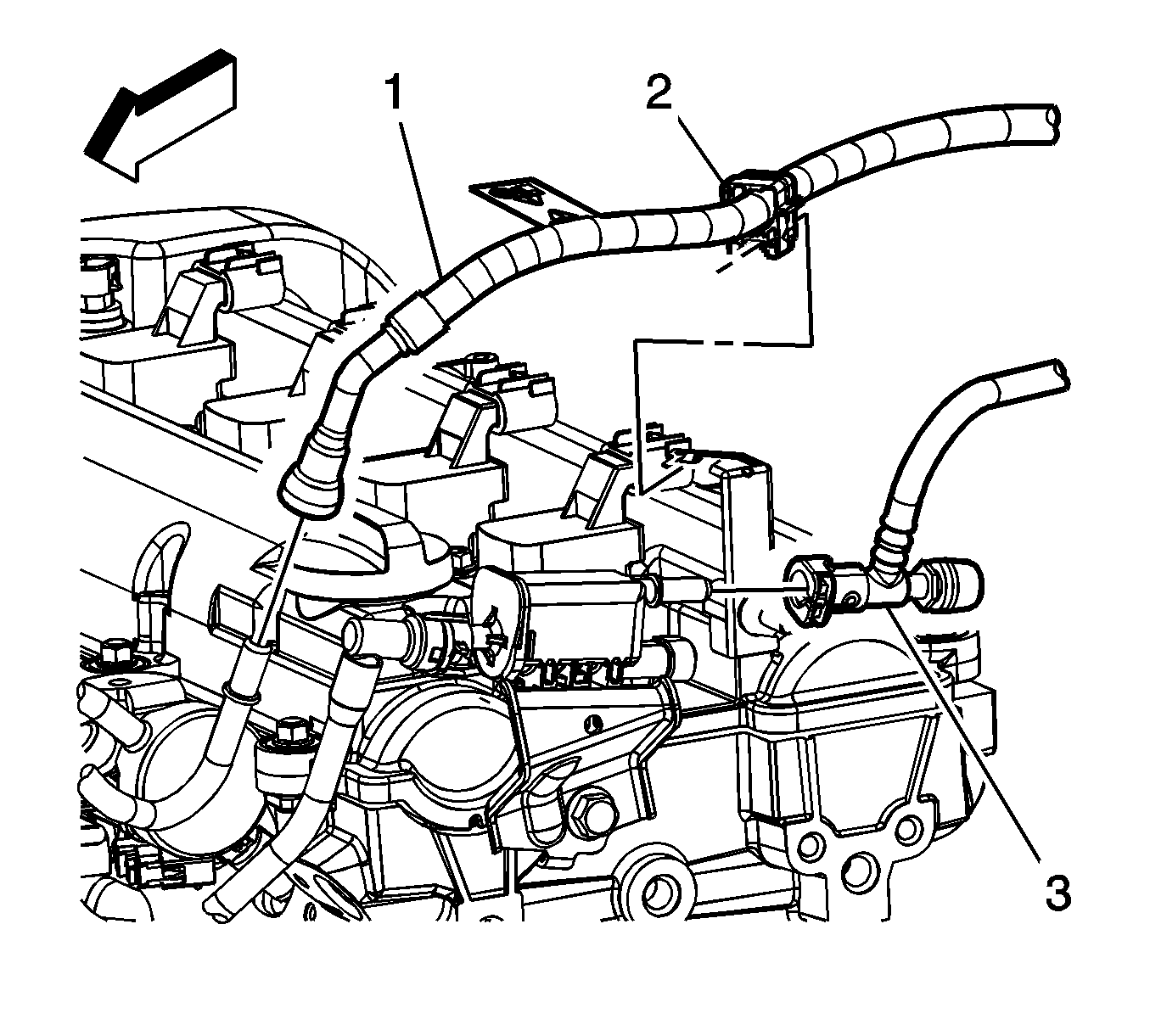

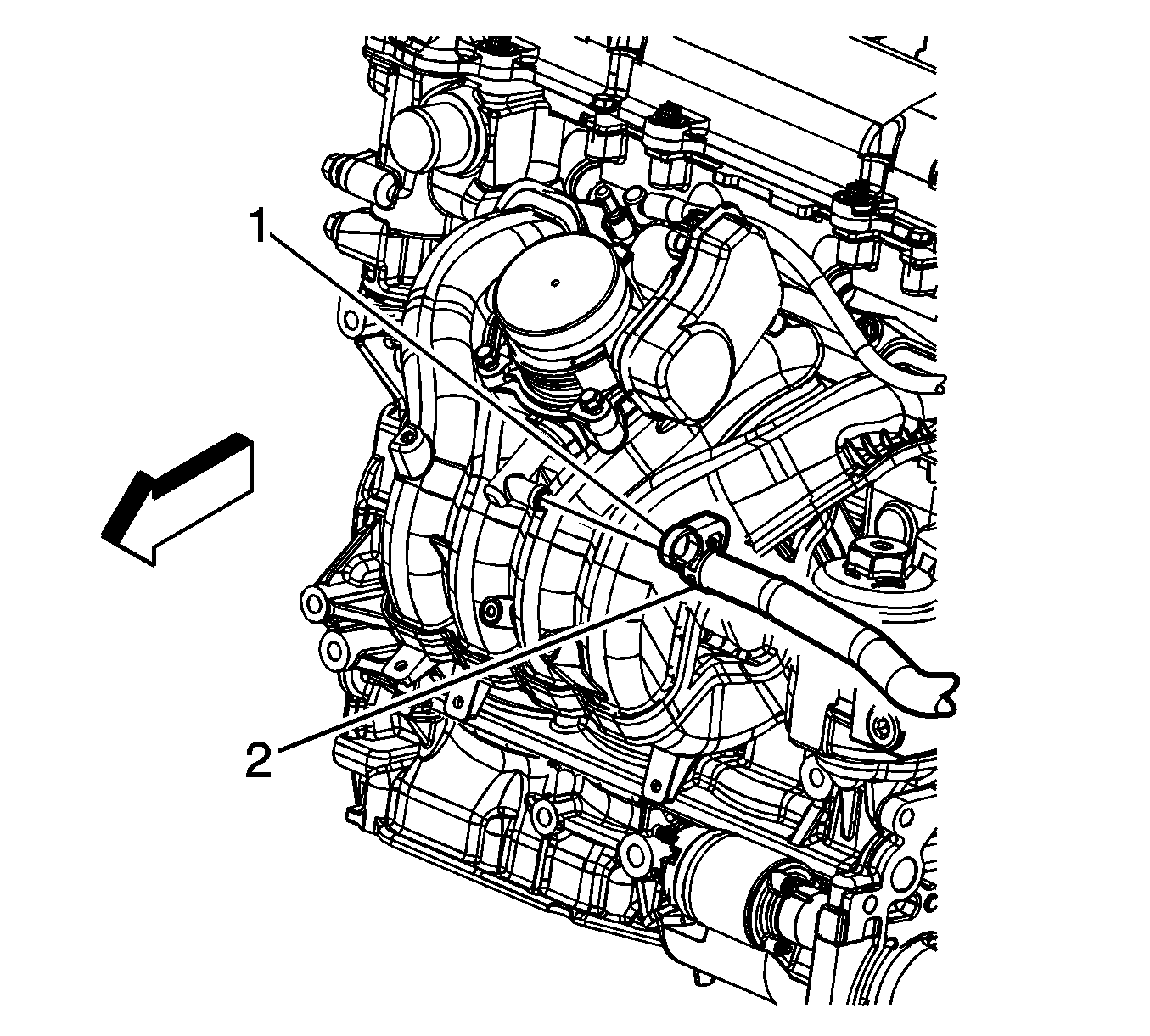
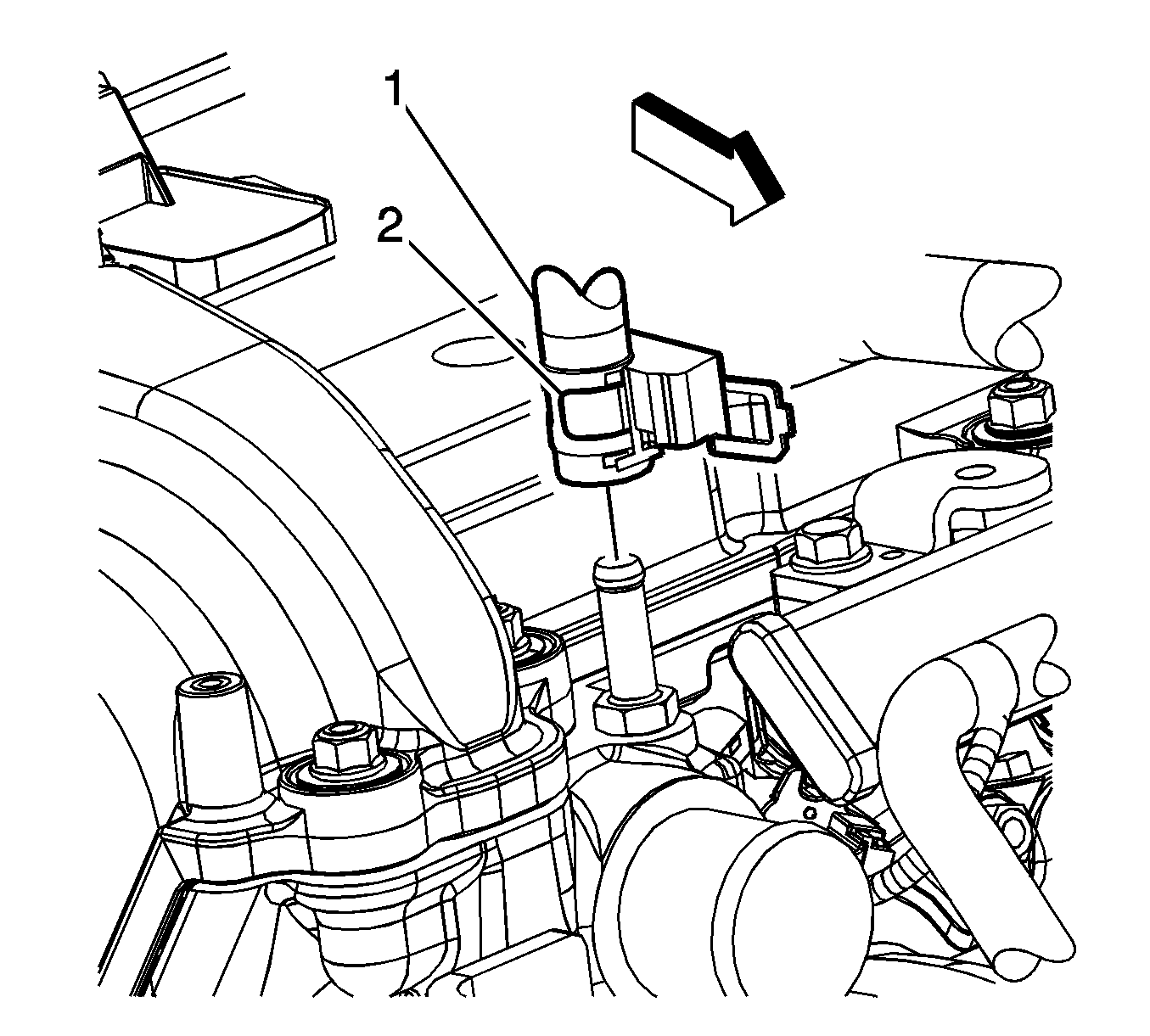
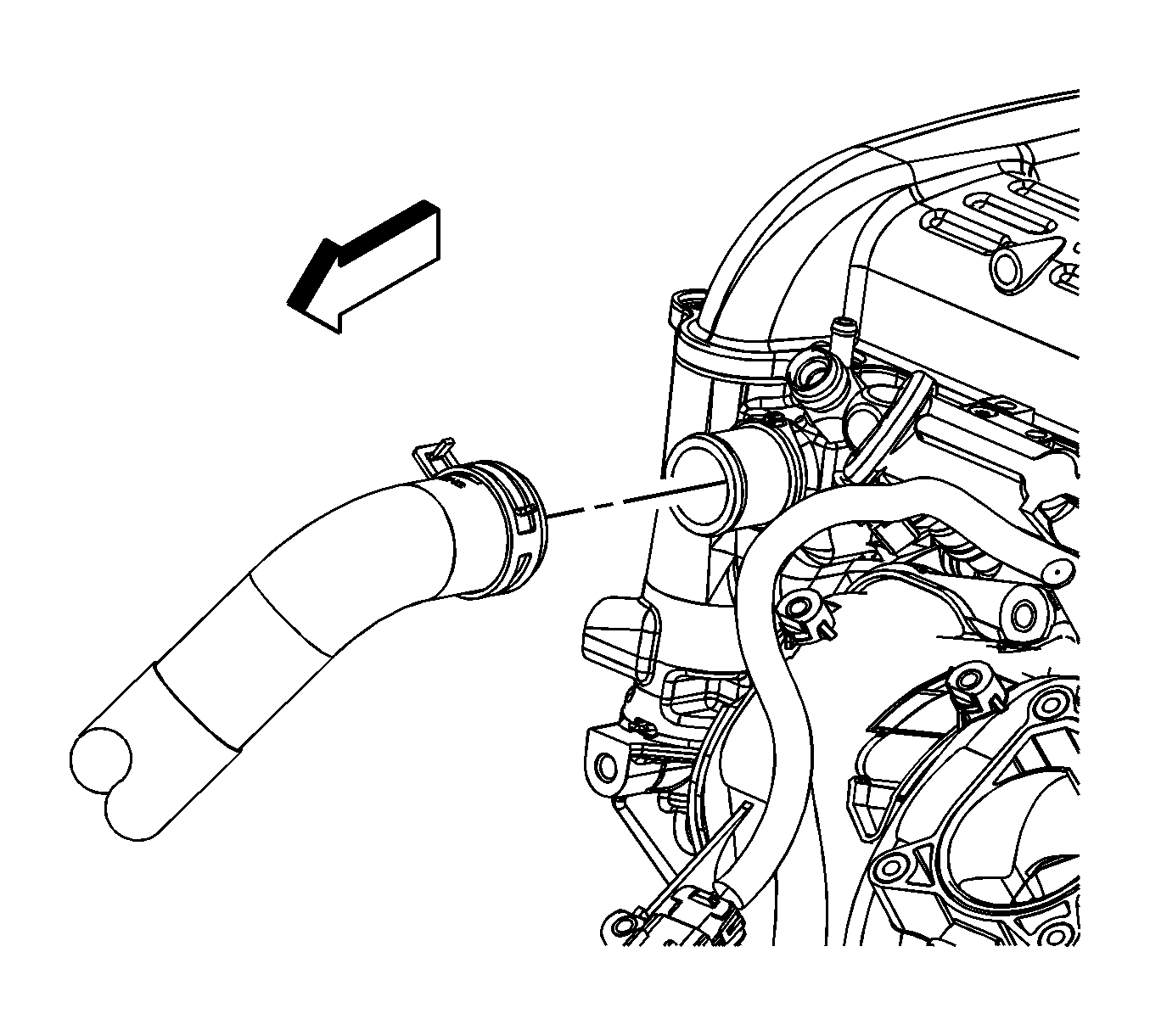

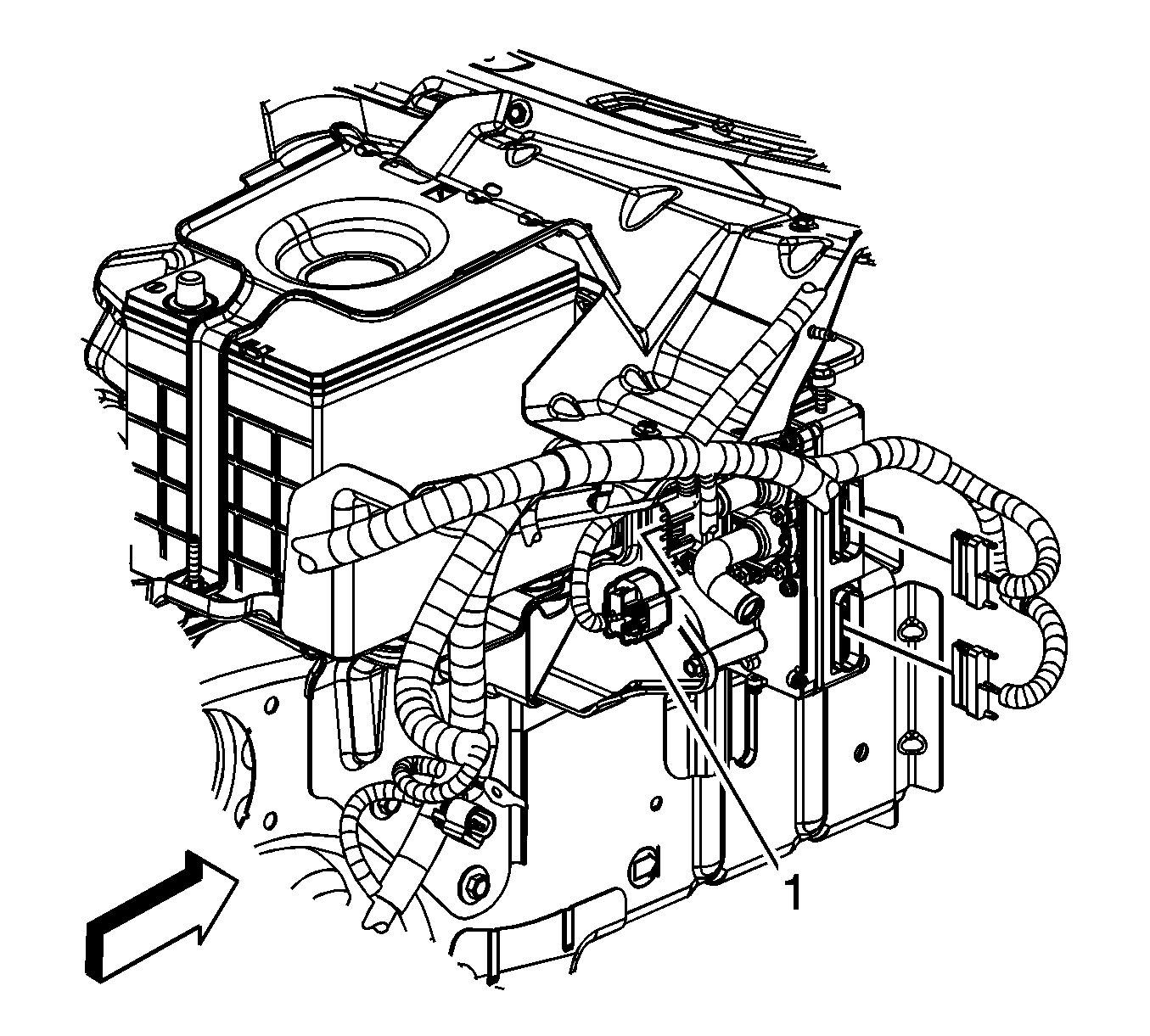

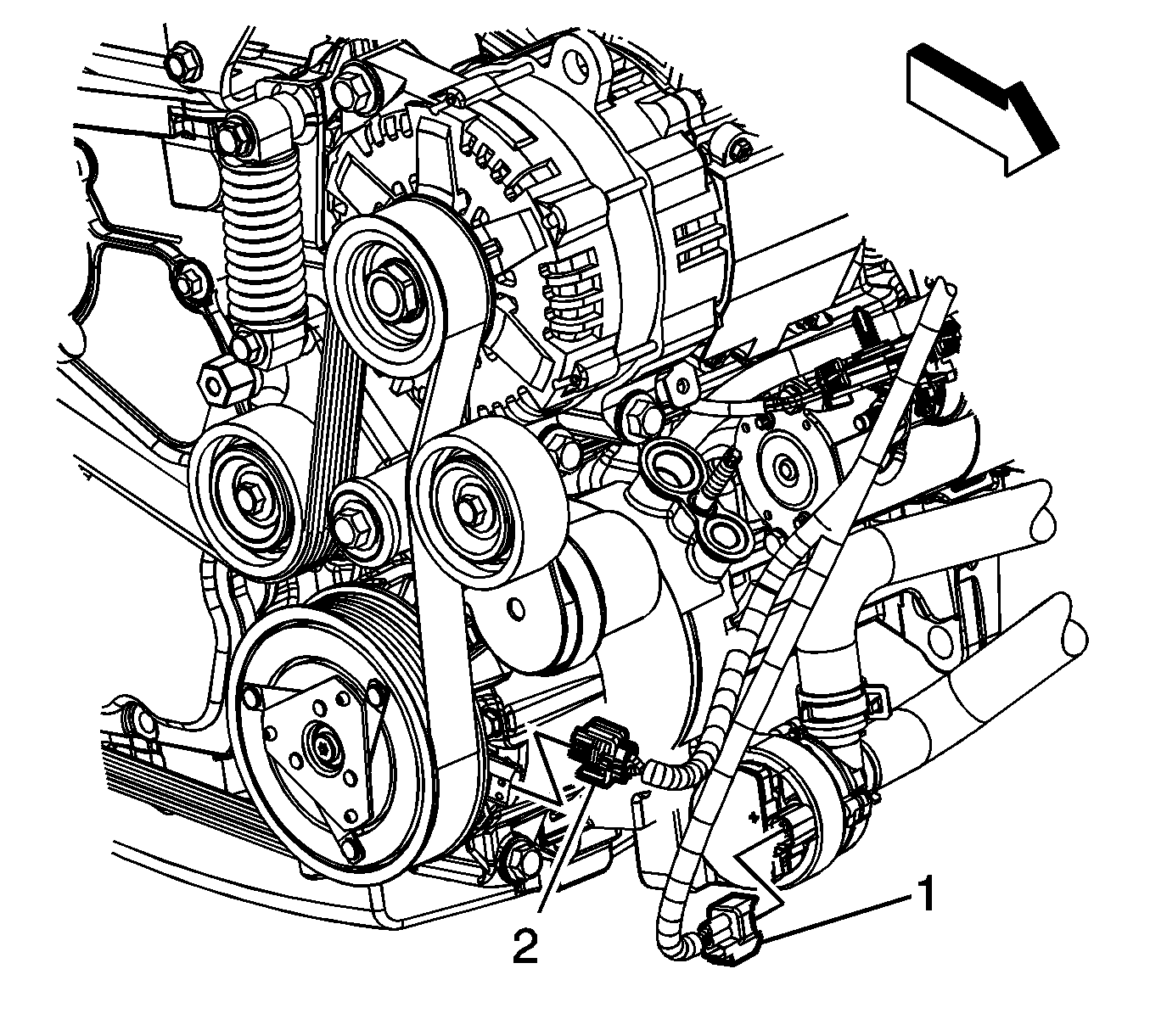
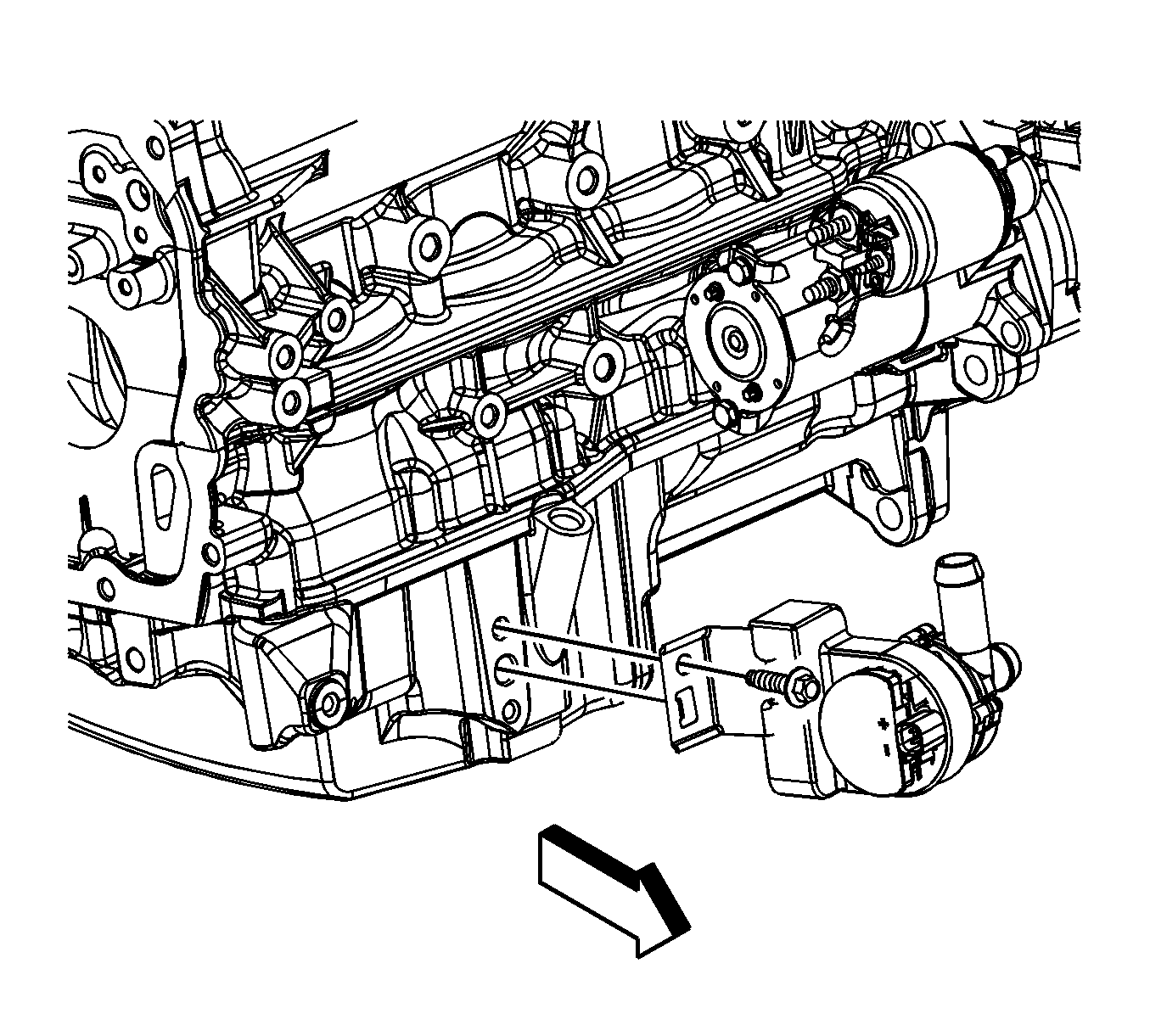

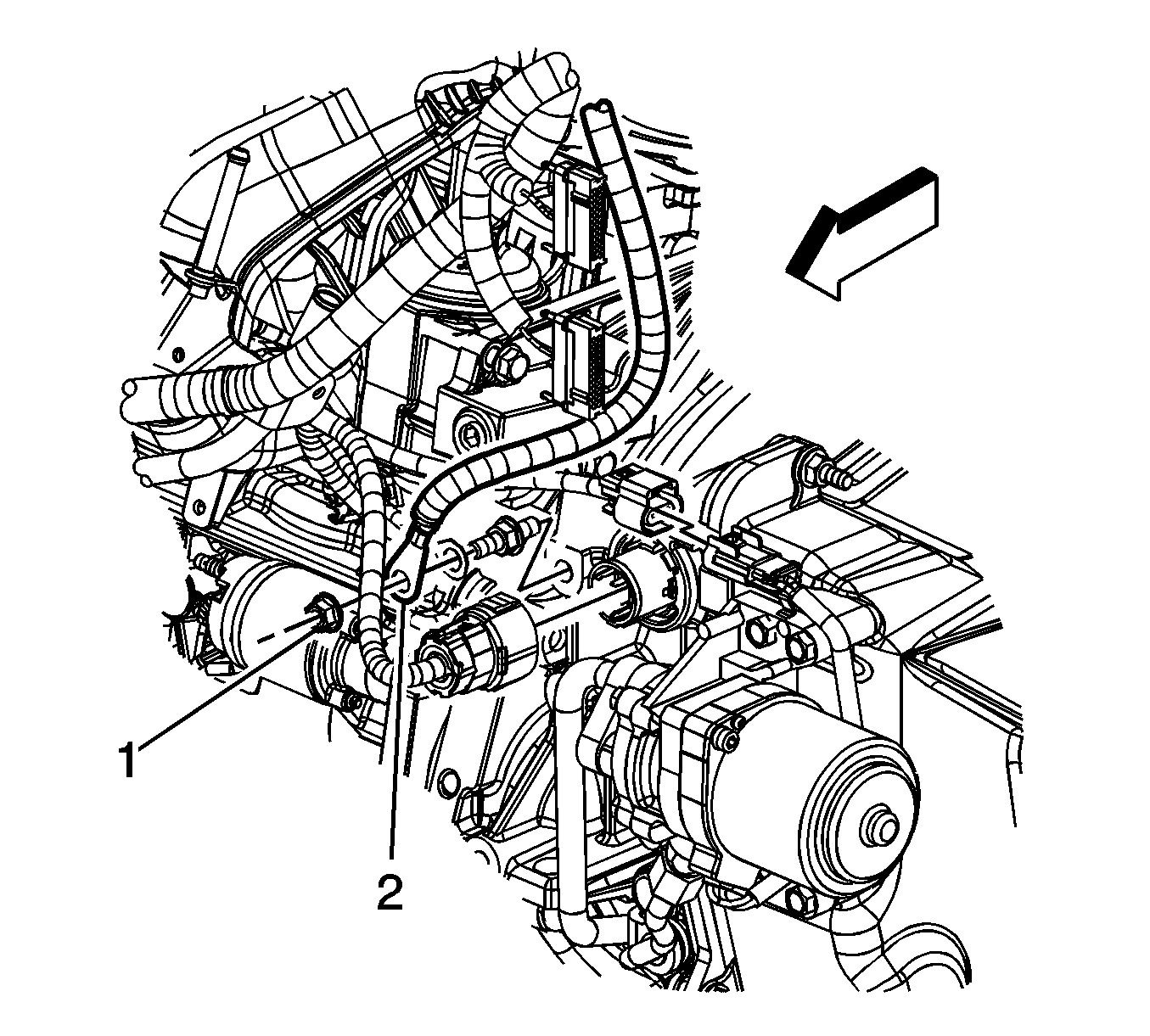
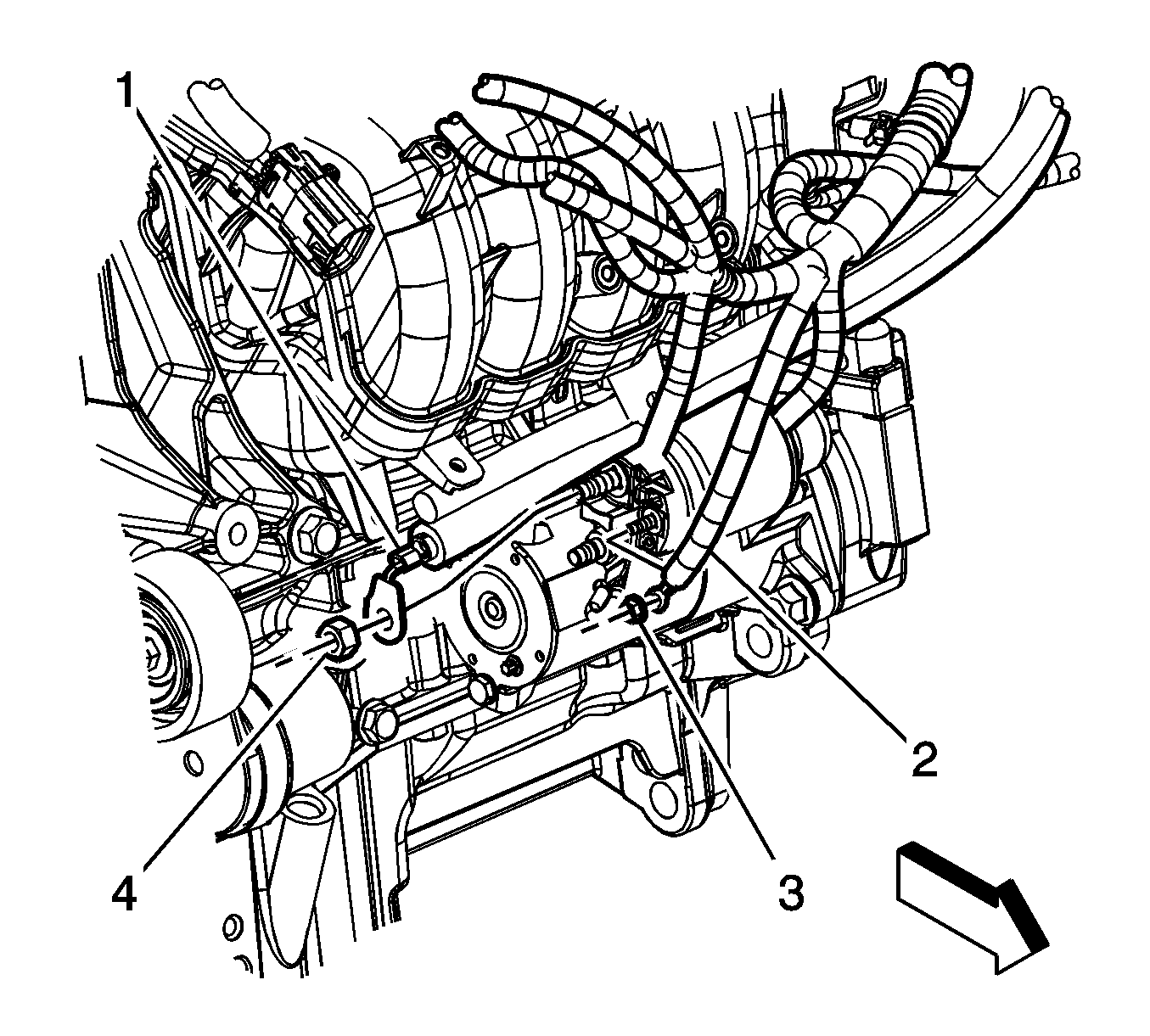

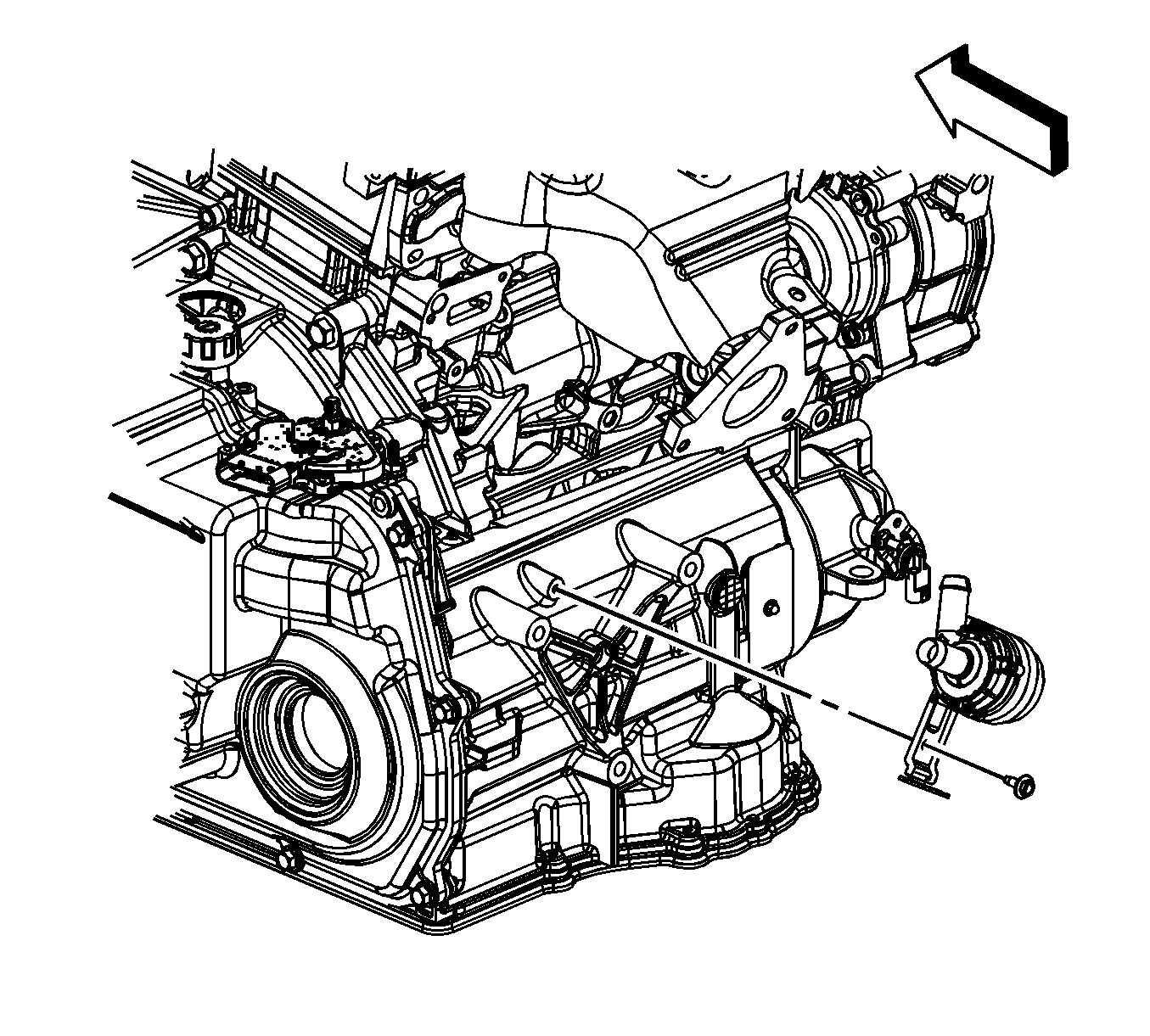
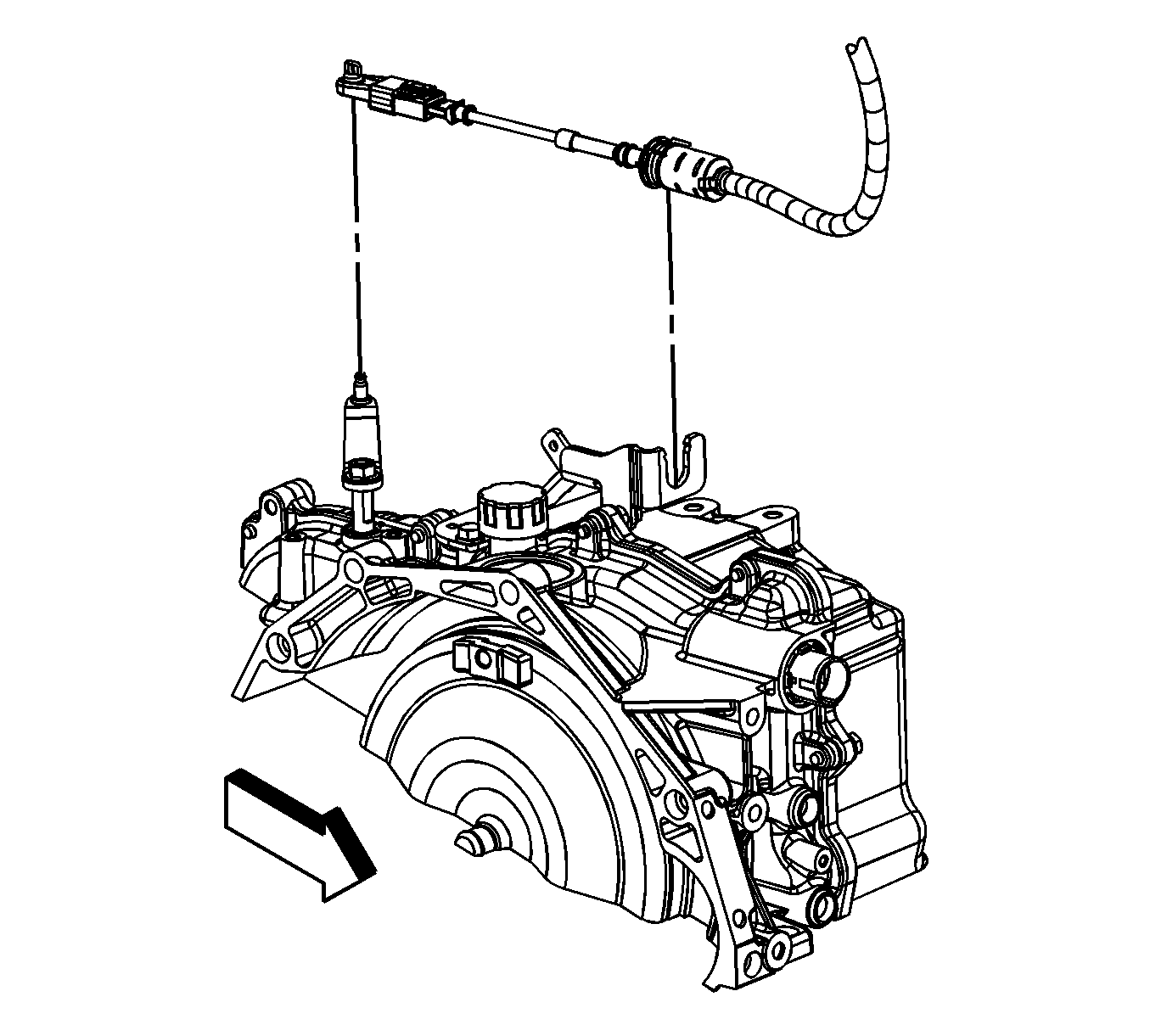
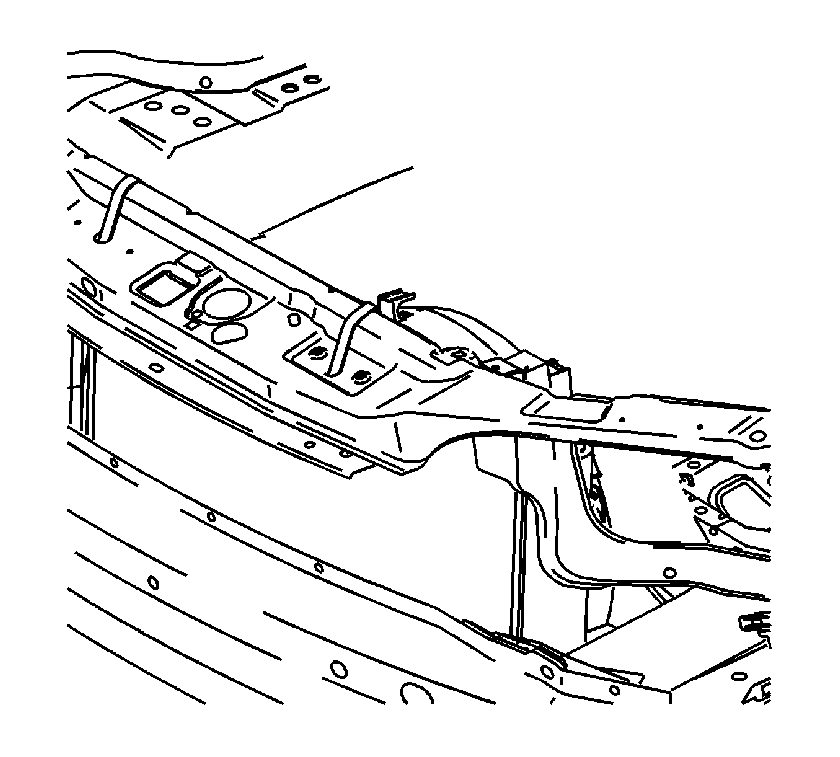
Important: The radiator/condenser/fan assembly will stay in the vehicle during engine removal.
Important: A piece of hardwood should be used between the transaxle and the engine cradle. This wood will support the engine when the left side engine mounts bolts are removed.
Important: A piece of hardwood should be used between the oil pan and the engine cradle. This wood will support the engine when the right side engine mounts are removed.
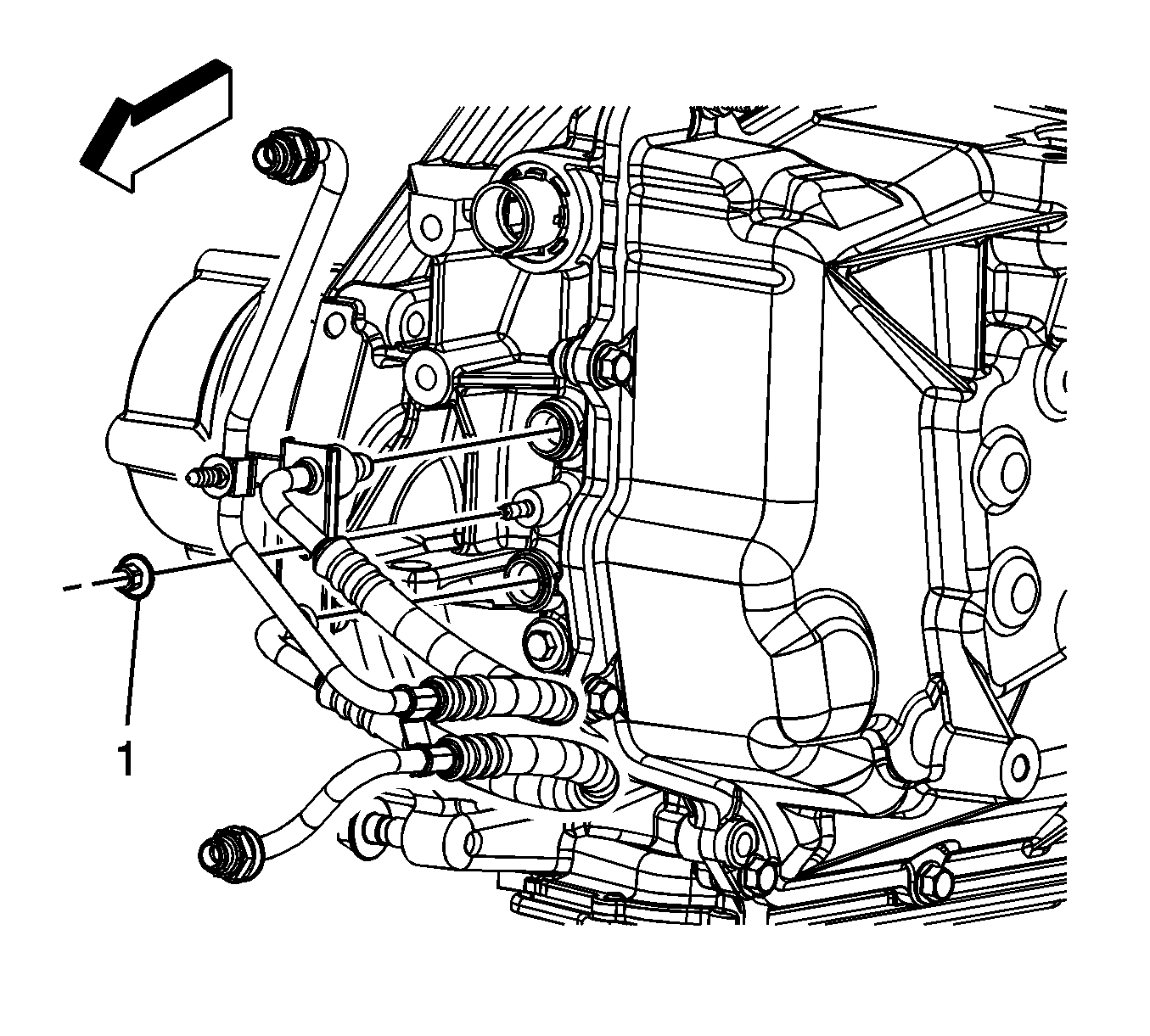
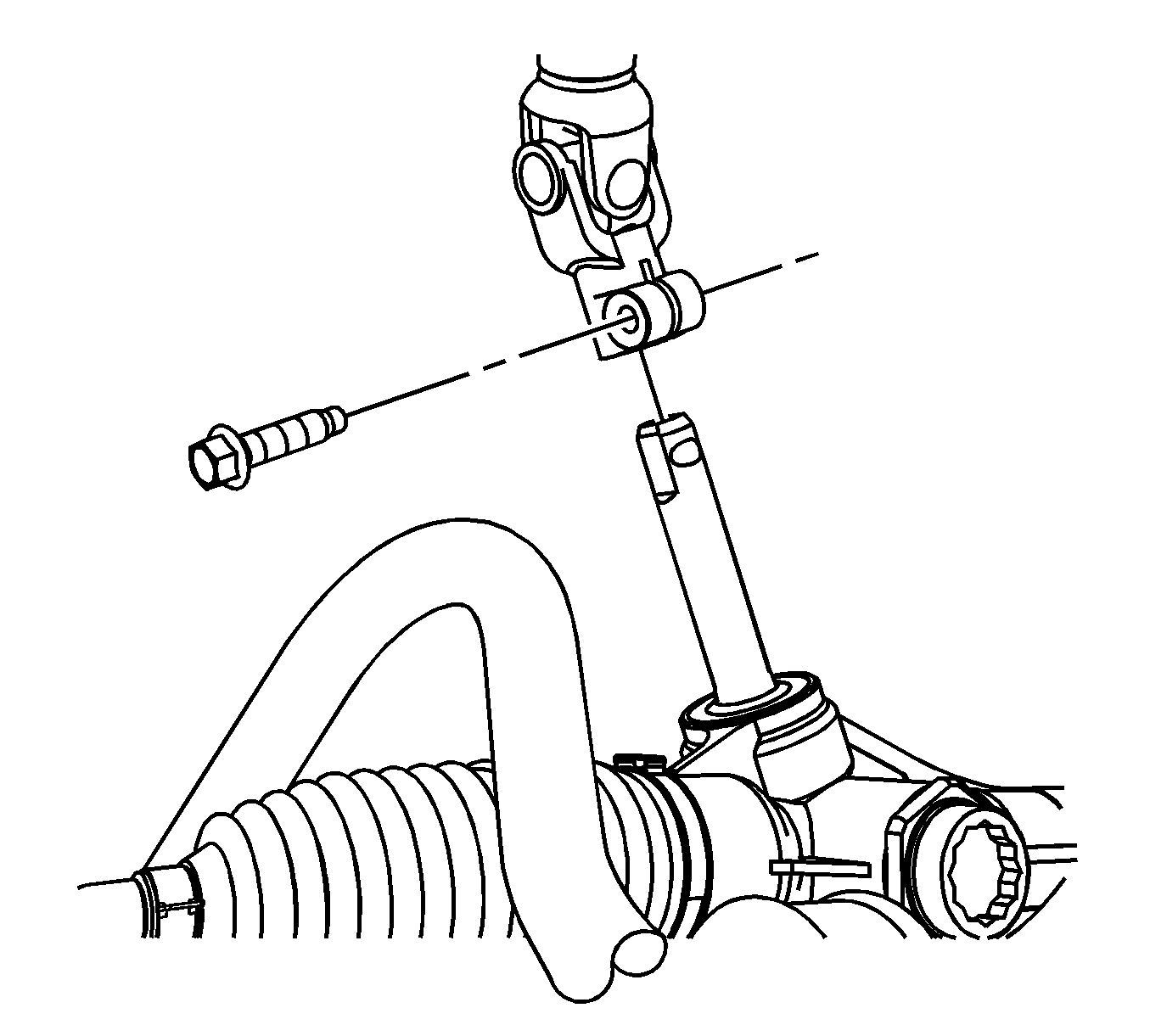
Important: Secure the steering wheel in the straight forward position before separating the intermediate shaft from the steering gear, or damage to the SIR coil will occur.
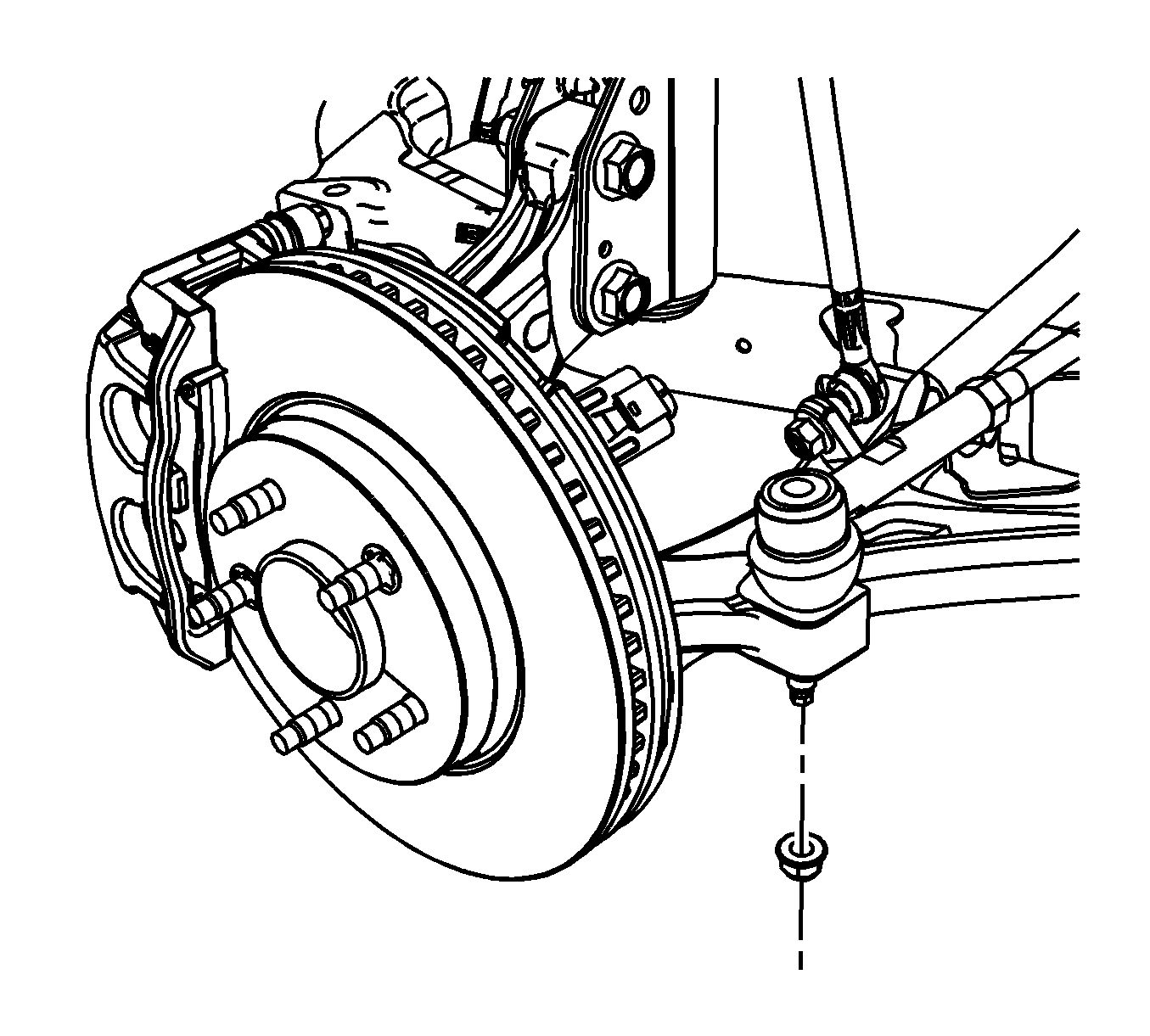
Important: Hold the ball stud to prevent turning during removal of the nut.
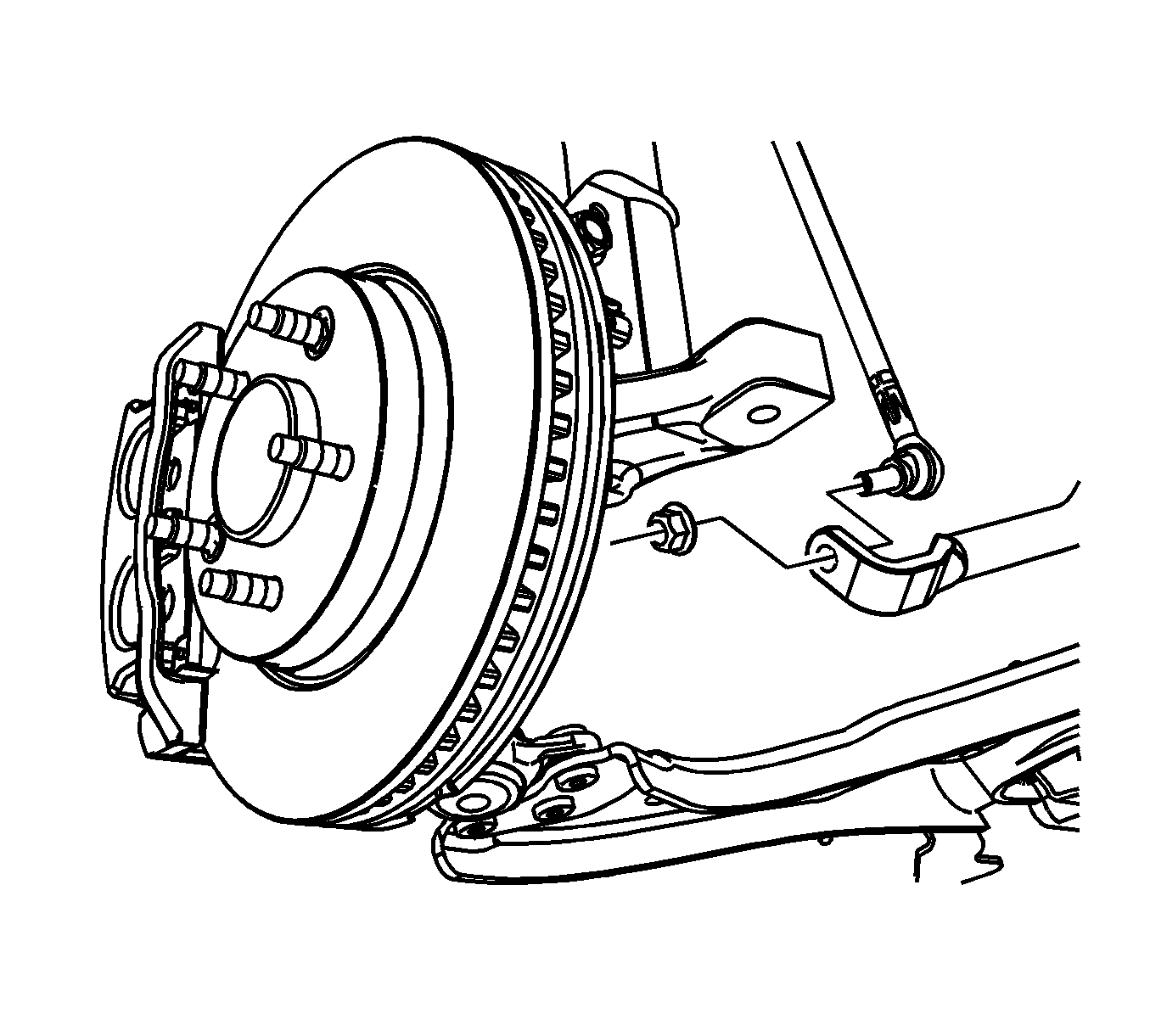
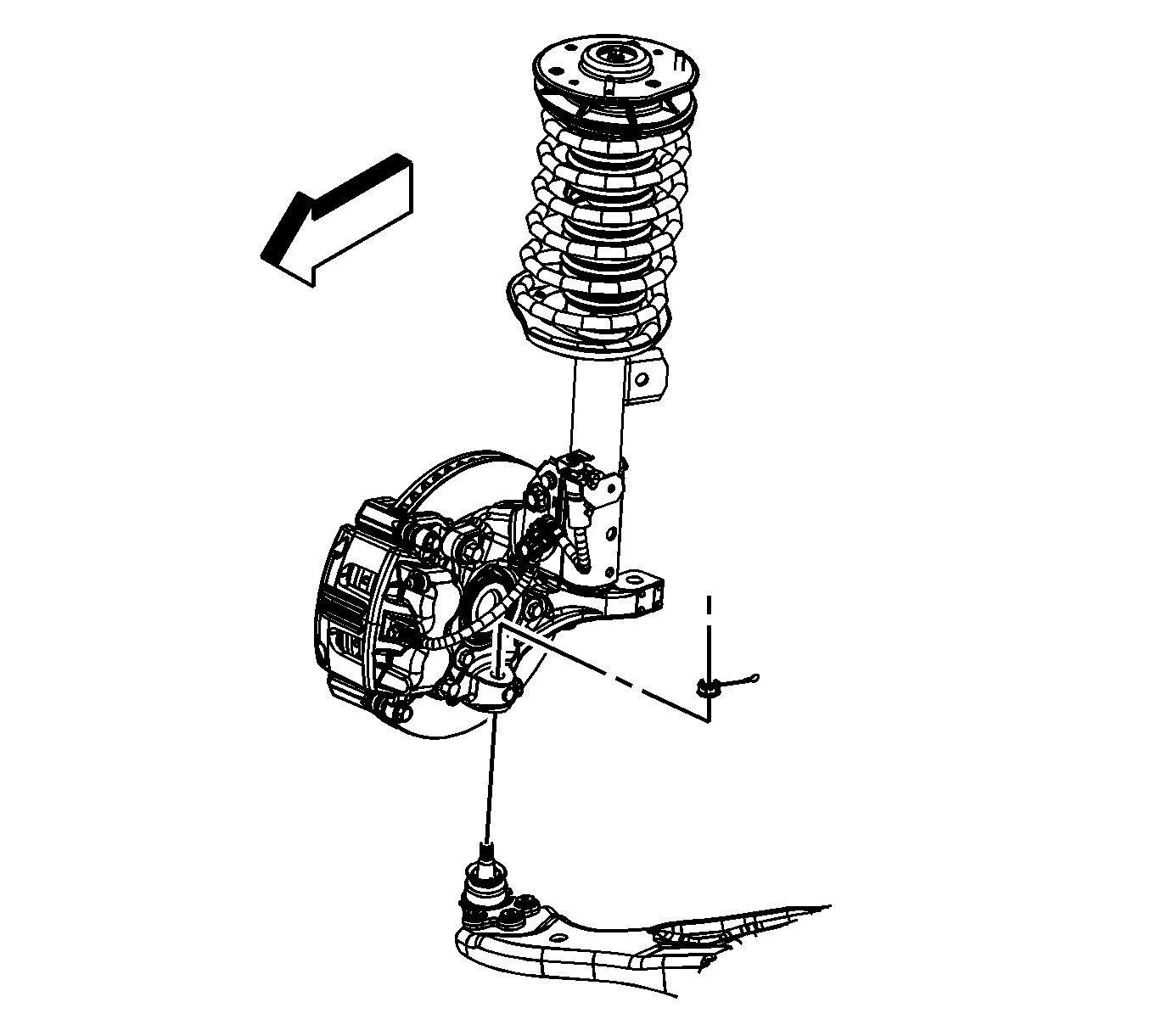
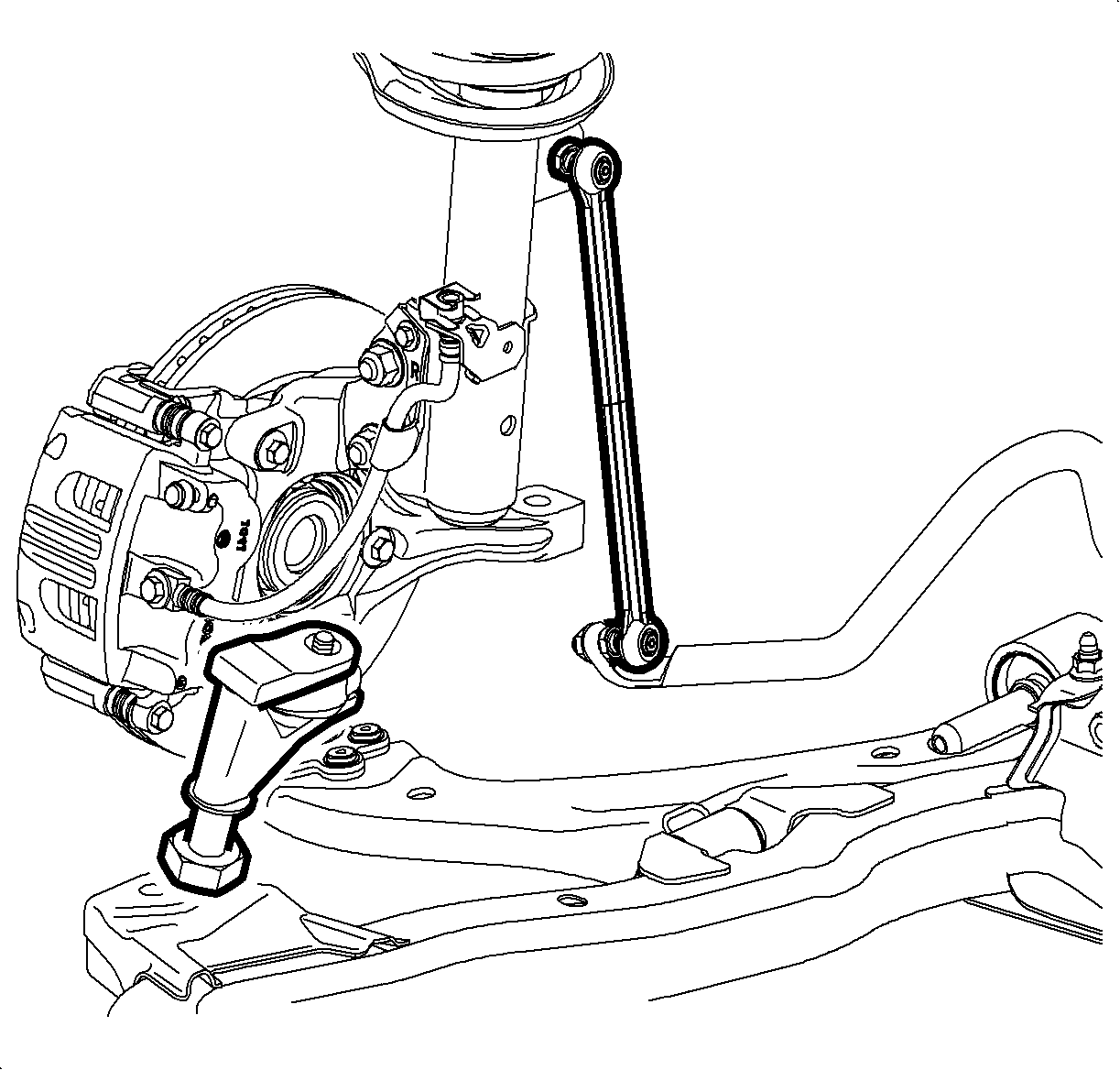
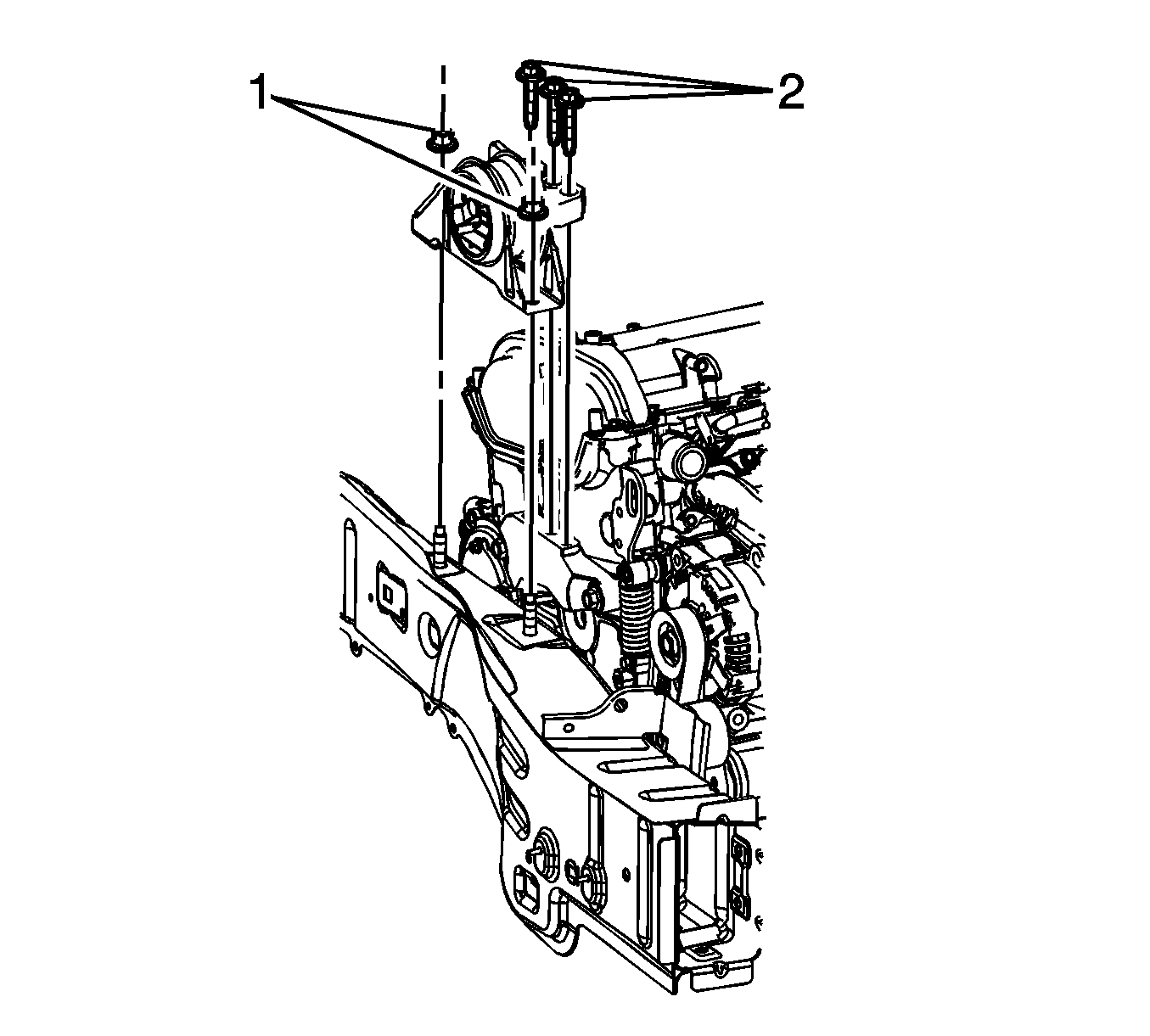
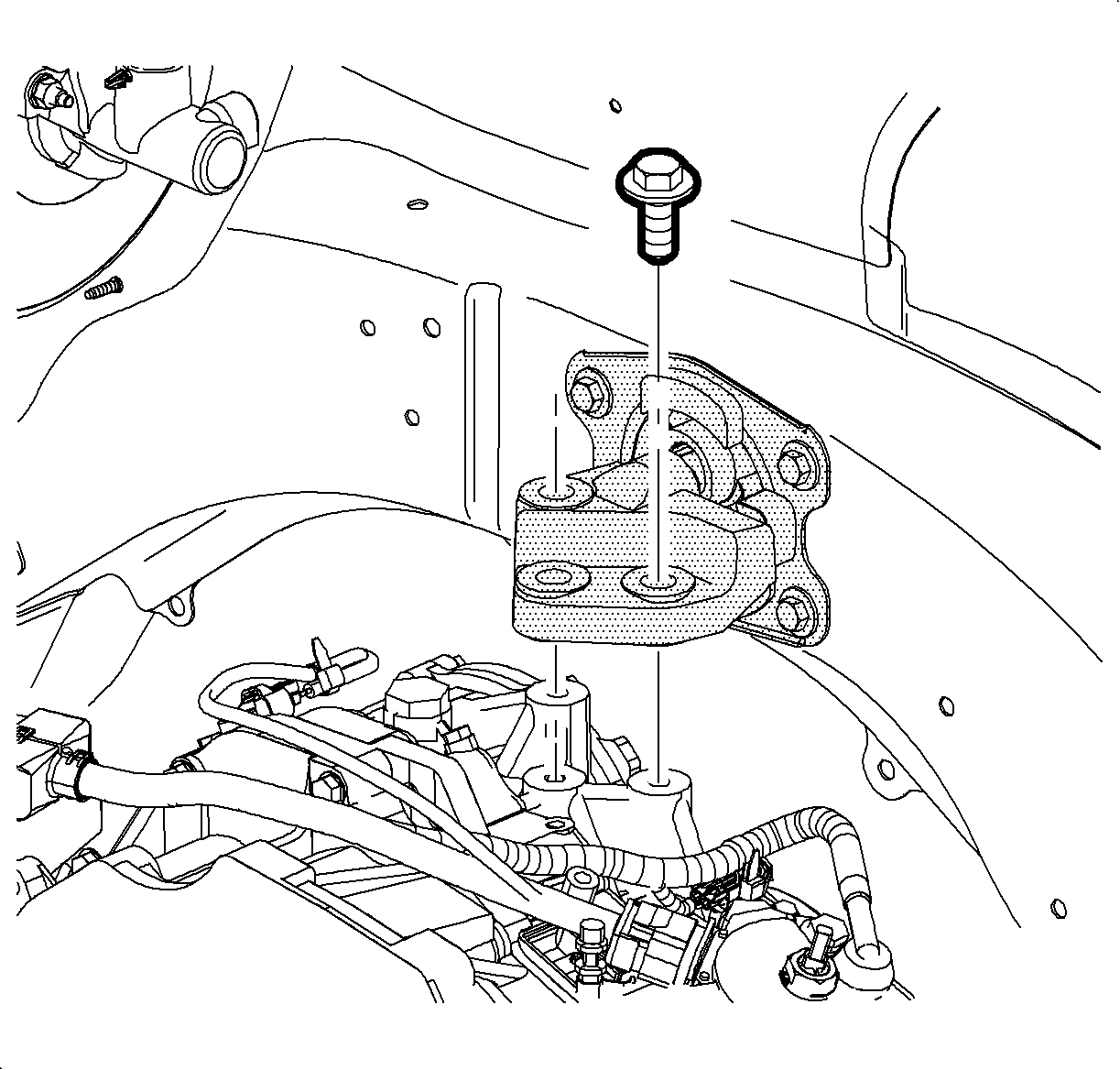
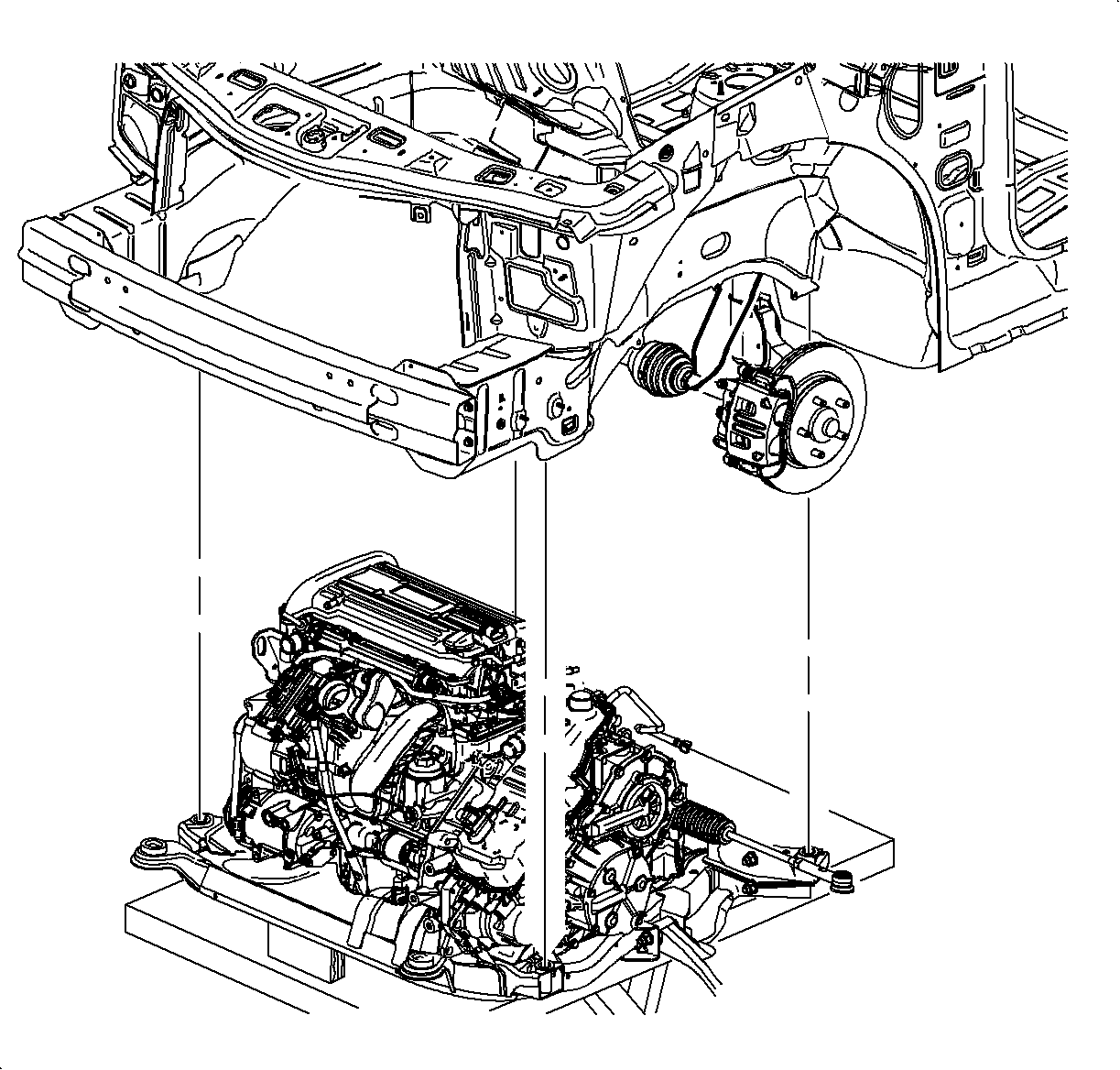
Important: During the powertrain removal support the vehicle body by placing a jack at the rear of the vehicle.
Important: Blocks of wood can be used between the front of the frame and the oil pan to table in order to level the powertrain during the removal.
Important: When lowering the engine/transaxle assembly, verify all brake lines, shifter cables and other components are free during removal.
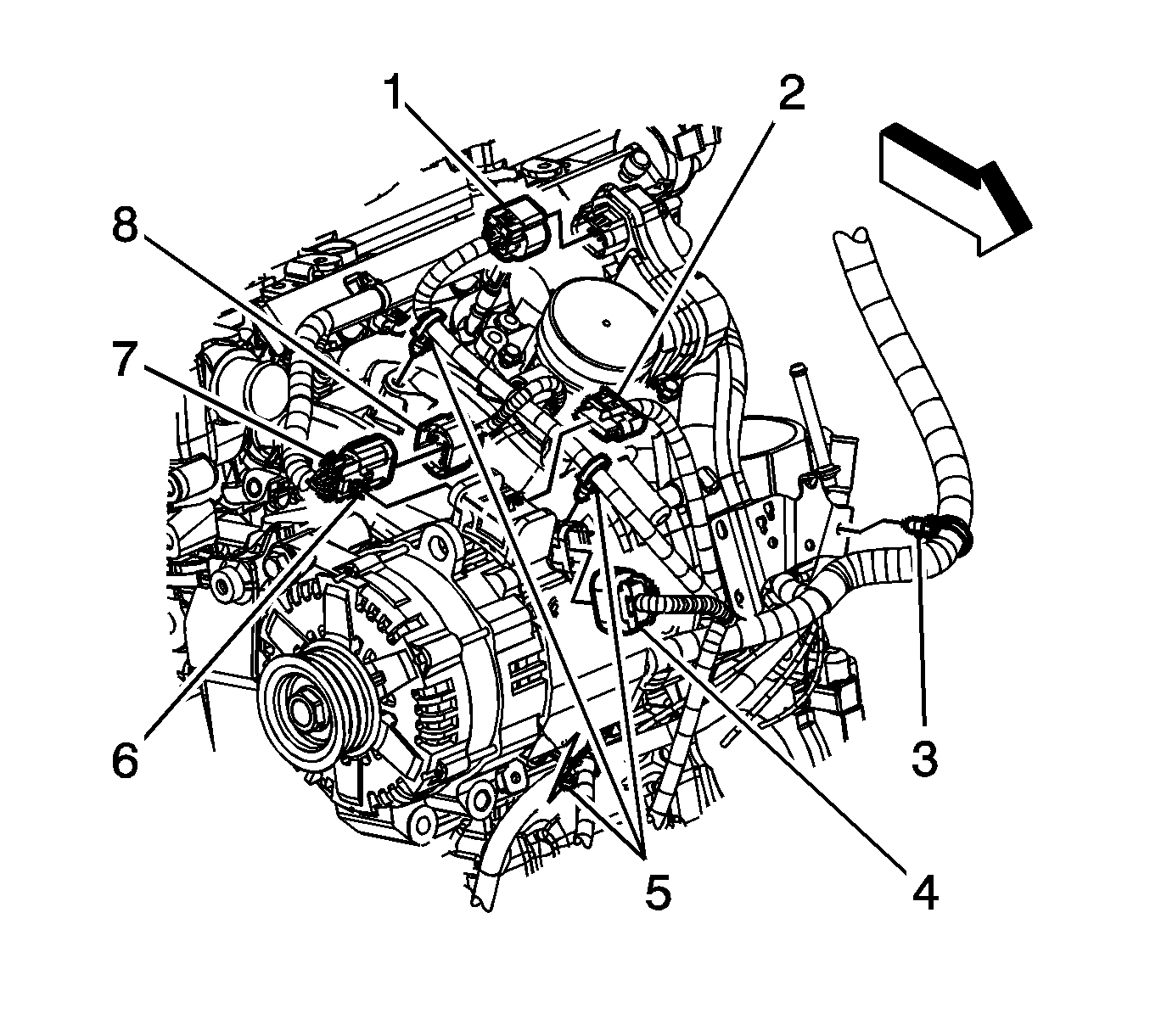
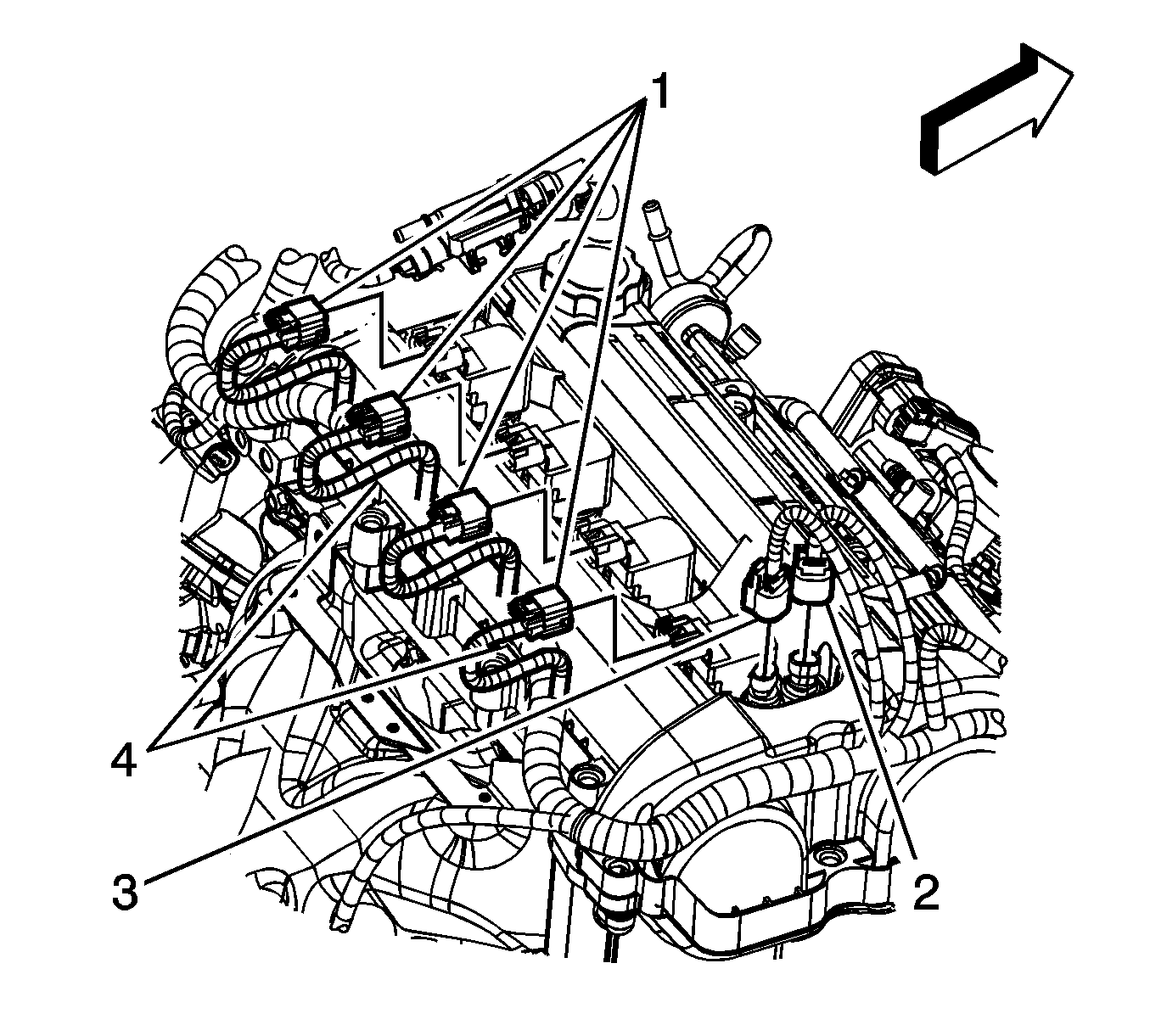
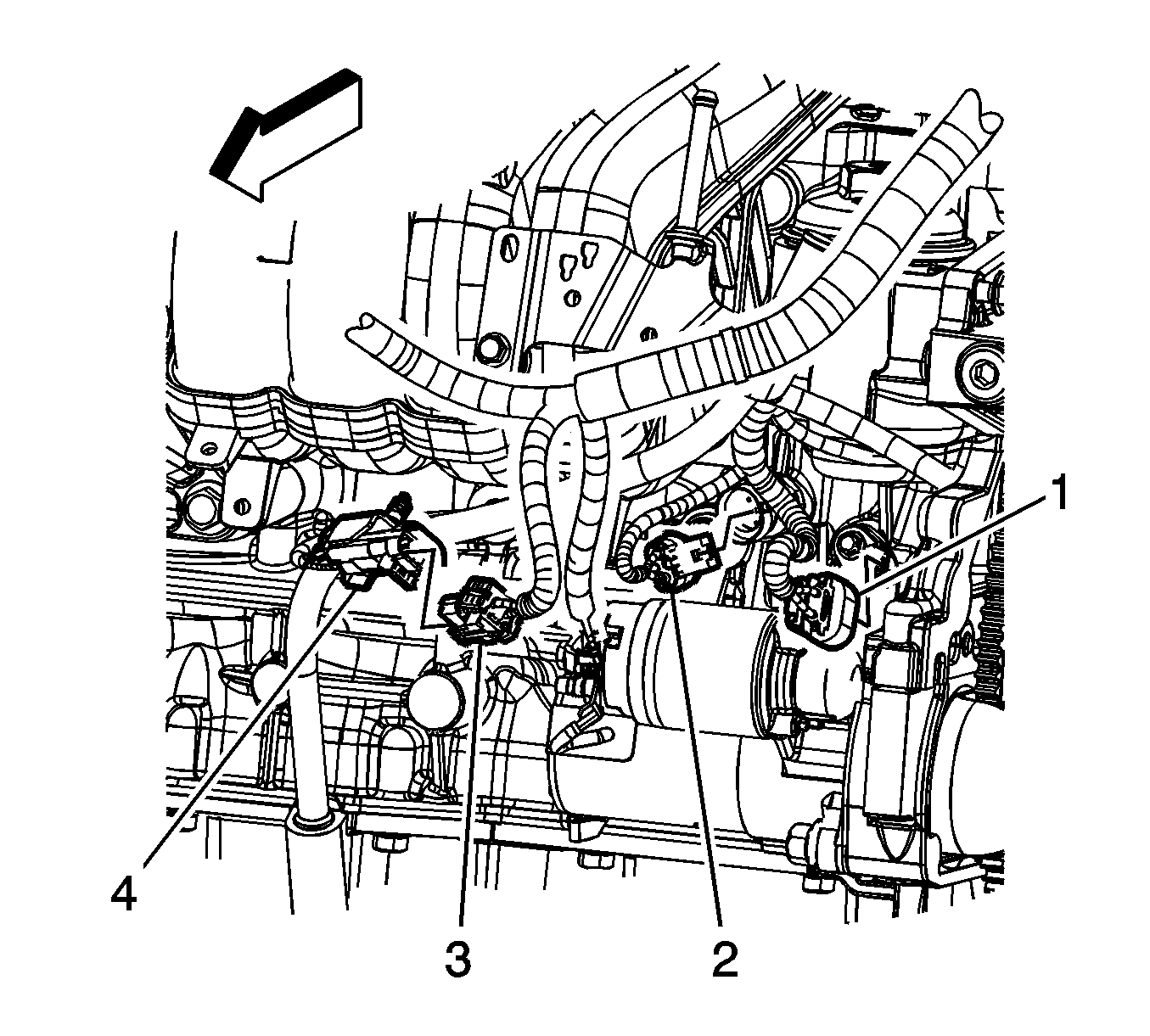
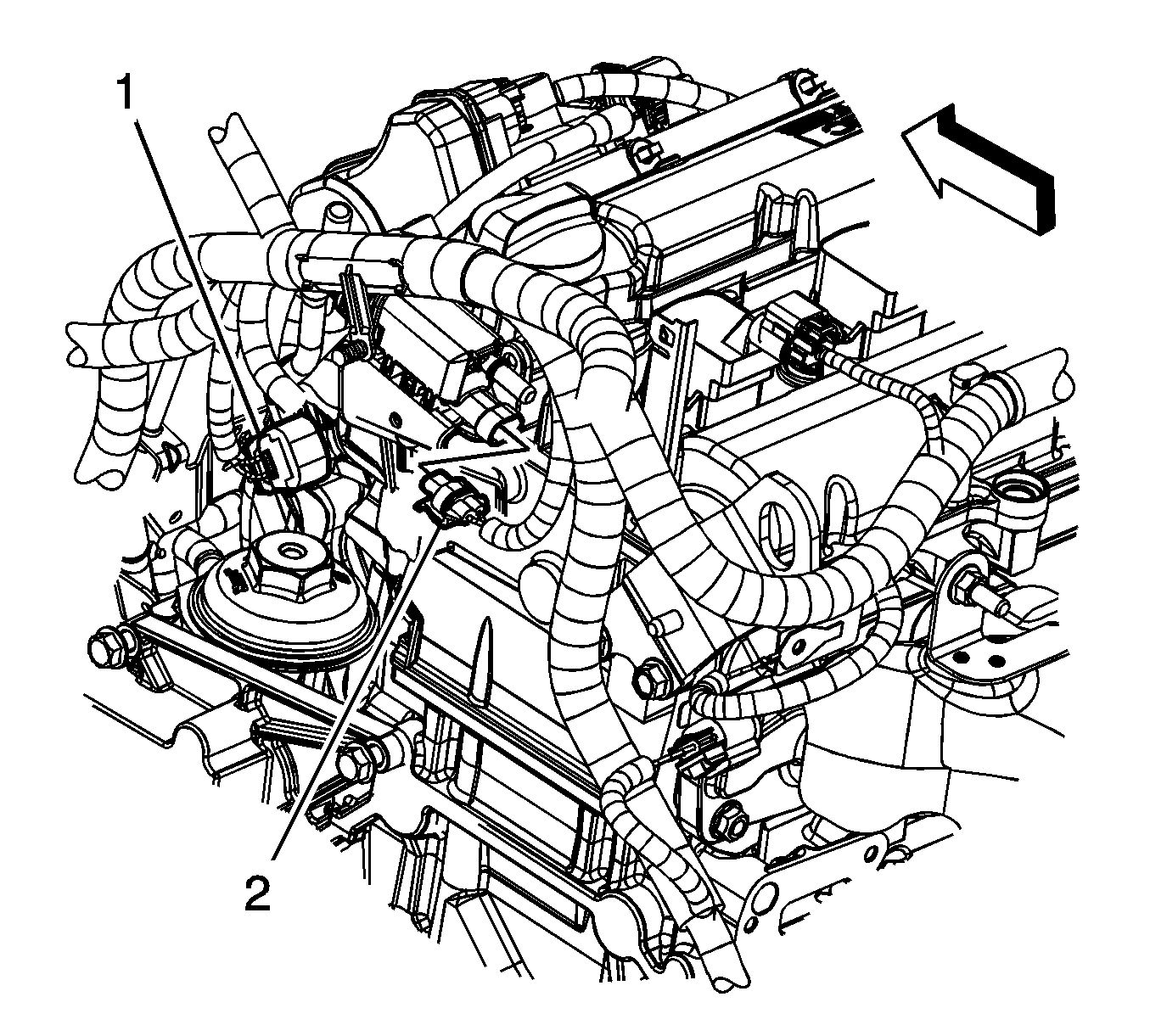
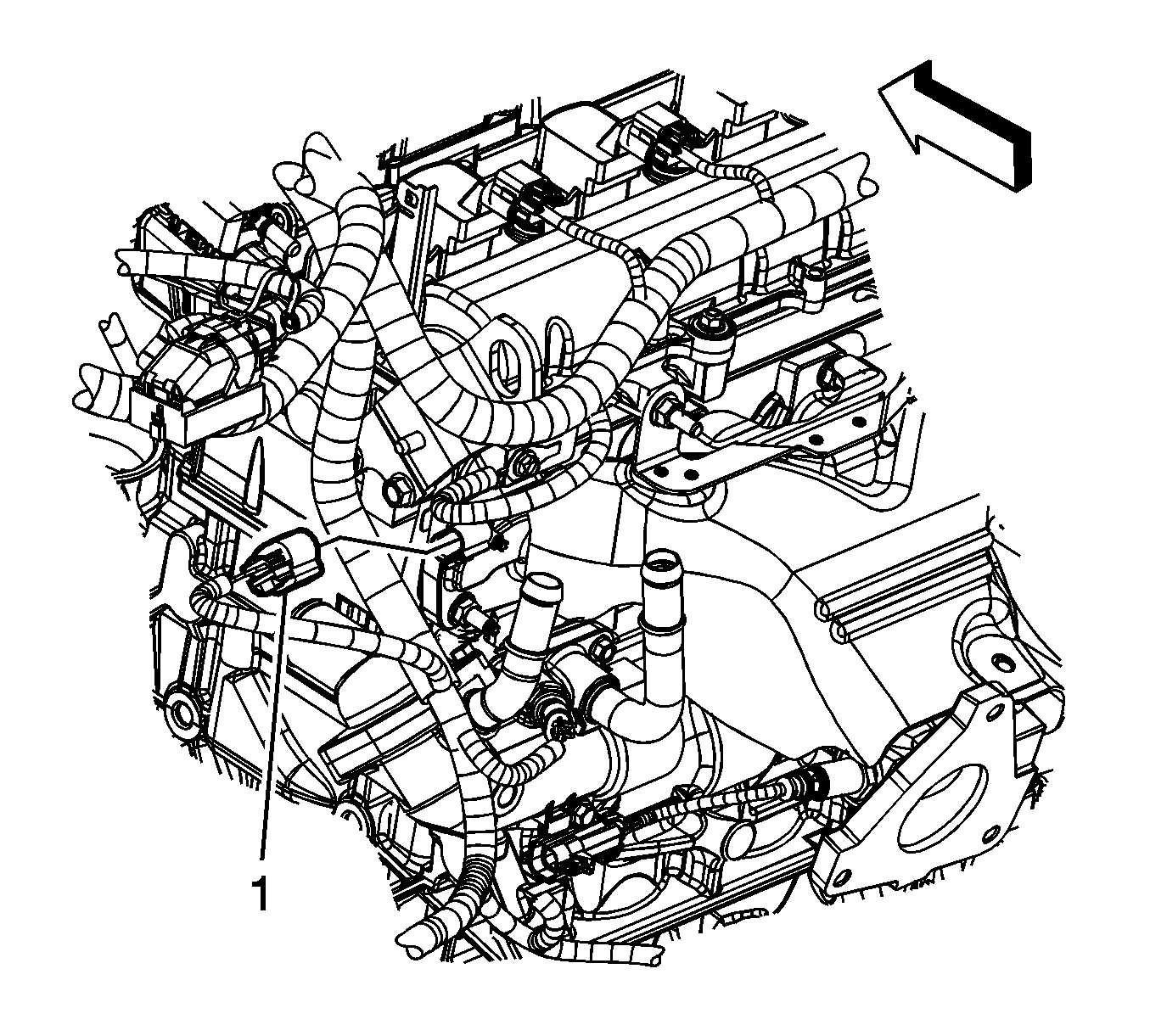

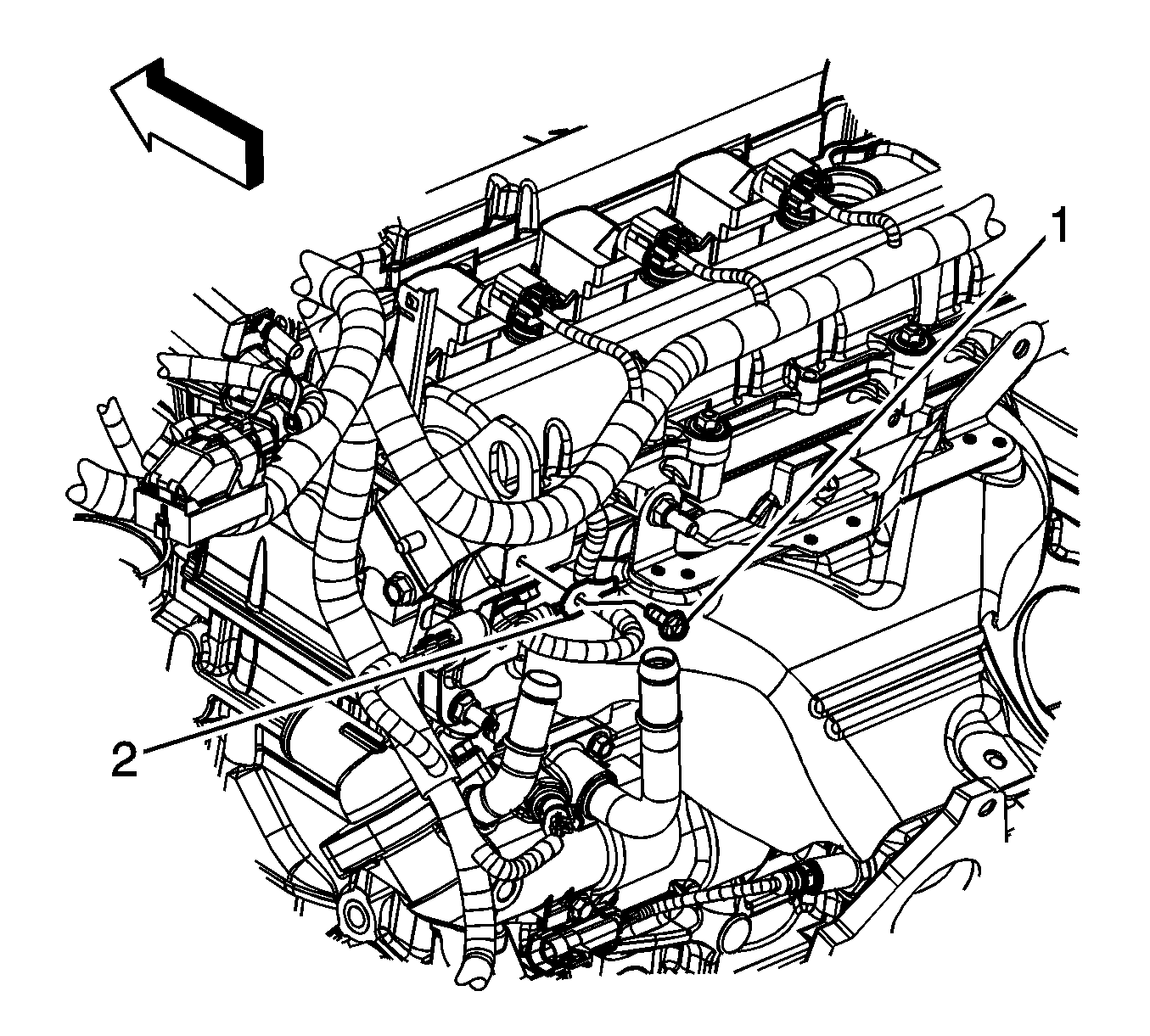
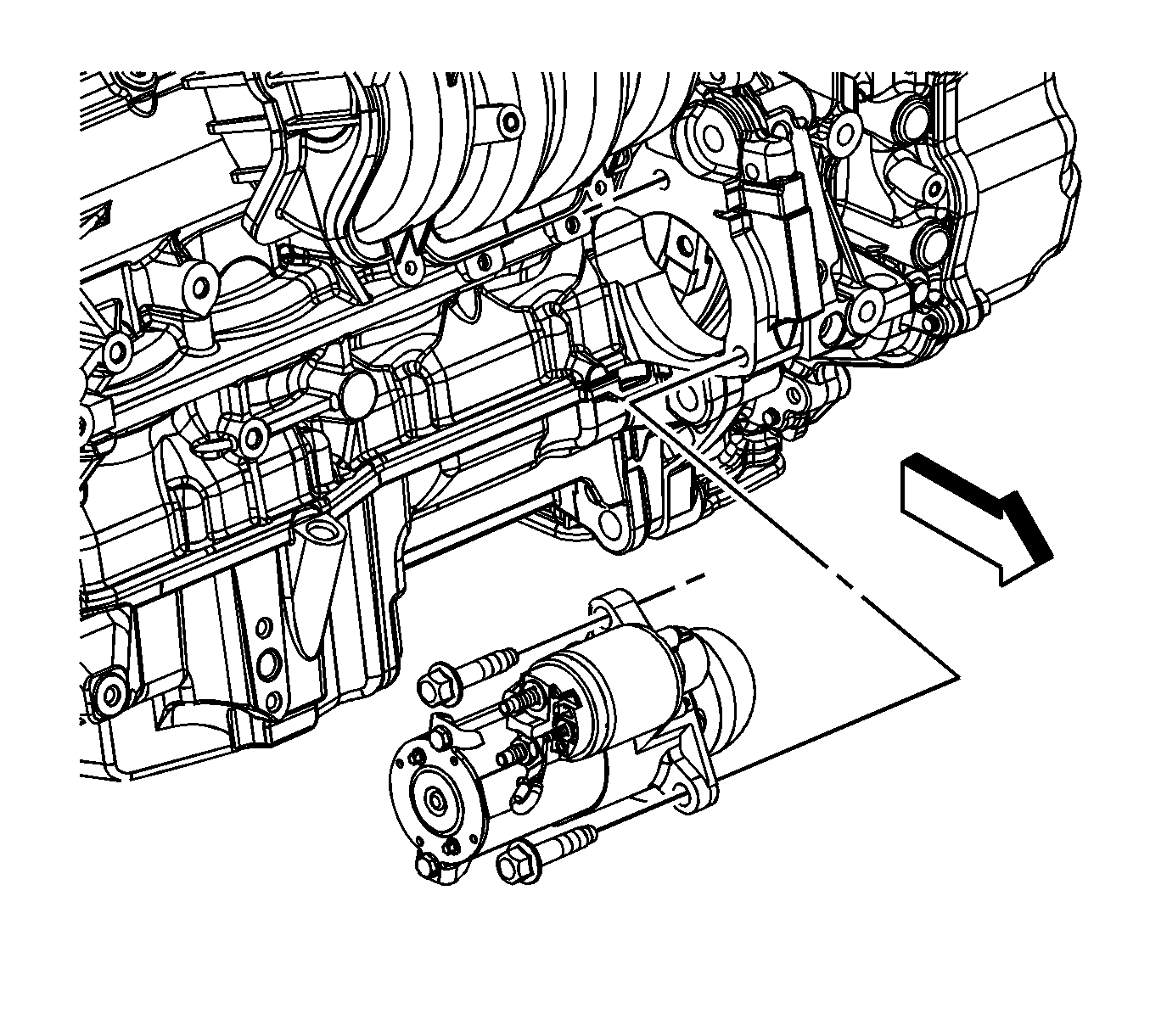
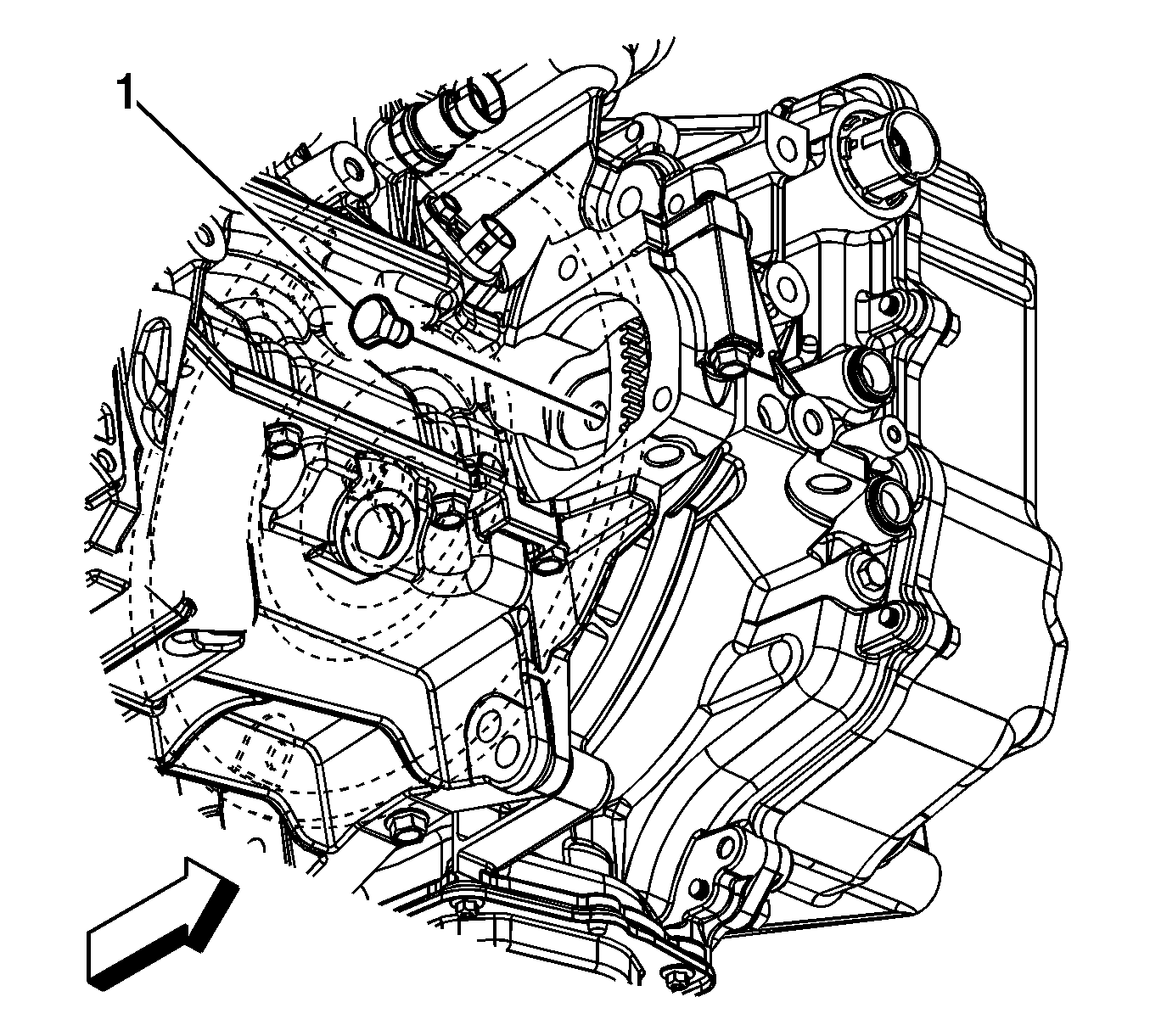
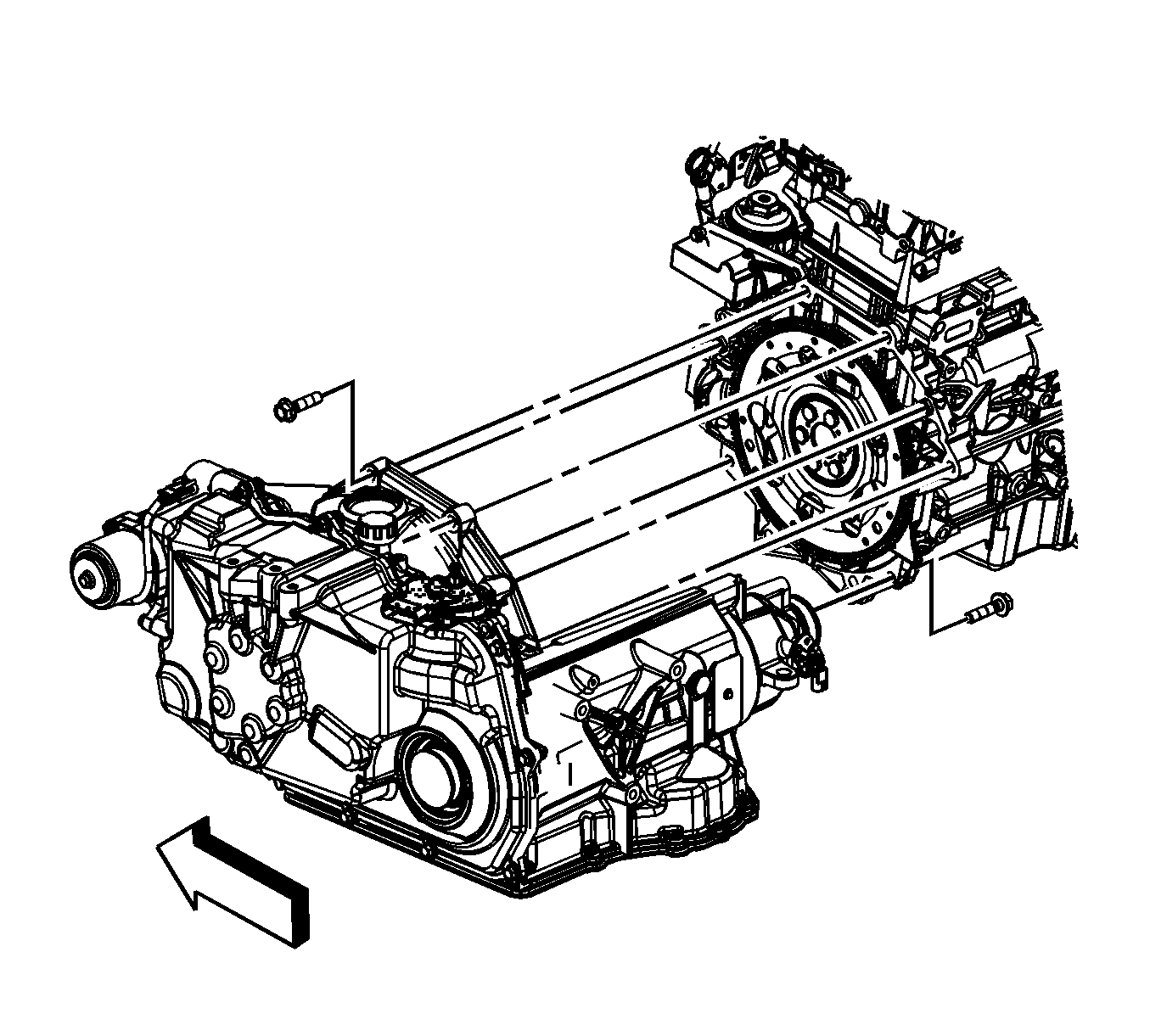
Installation Procedure
- Install a suitable lifting devise to the engine.
- Using the lifting devise, position and install the engine to the transaxle.
- Install the transaxle bolts to the engine.
- Install the torque converter to flexplate bolts (1).
- Remove the engine lifting devise.
- Install the starter motor and bolts.
- Gather all branches of the engine wiring harness and position the harness to the engine.
- Position the engine wiring harness ground terminal to the engine and install the engine wiring harness ground bolt (1).
- Connect the engine wiring harness electrical connector (1) to the ECT sensor.
- Connect the engine wiring harness electrical connector (3) to the HO2S electrical connector.
- Install the engine wiring harness clip (5) to the stud.
- Connect the engine wiring harness electrical connector (1) to the exhaust CMP sensor.
- Connect the engine wiring harness electrical connector (1) to the intake CMP sensor.
- Connect the engine wiring harness electrical connector (2) to the EVAP emission canister purge solenoid valve.
- Connect the engine wiring harness electrical connector (1) to the CKP sensor.
- Connect the engine wiring harness electrical connector (2) to the oil pressure sensor.
- Connect the engine wiring harness electrical connector (3) to the knock sensor.
- Connect the engine wiring harness electrical connectors (1) to the ignition coils.
- Connect the engine wiring harness electrical connectors (2, 3) to the camshaft actuators.
- Connect the engine wiring harness electrical connector (1) to the throttle actuator.
- Connect the engine wiring harness electrical connector (8) to the fuel injector wiring harness electrical connector (7).
- Install the engine wiring harness clip (3) to the oil level indicator tube bracket.
- Position the powertrain and support table under the vehicle.
- Raise the powertrain into position under the vehicle.
- With the table positioned, if required, lower the vehicle over the powertrain.
- Align the lower radiator pins with the frame. Ensure all hoses and electrical harnesses are correctly routed and free from the loading path of the powertrain.
- Install the NEW frame to body bolts.
- Lower the vehicle.
- Install the transaxle mount to transaxle adapter bolts.
- Install the engine mount to engine mount bracket bolts (2):
- Tighten the engine mount to bracket bolts in the following sequence.
- Raise and support the vehicle.
- Install the wheel drive shafts. Refer to Front Wheel Drive Shaft Replacement.
- Install the control arm ball studs into the steering knuckles.
- Install the ball stud nuts
- Continue to tighten the nuts only enough to align the castle nut slots with the ball stud, install NEW cotter pins.
- Connect the stabilizer links to the stabilizer shaft and install the stabilizer link to stabilizer shaft nuts.
- Connect the outer tie rods to the steering knuckles.
- Use the J 44015 in order to seat the ball stud taper to 40 N·m (30 lb ft).
- Remove the J 44015 .
- Install NEW outer tie rod to steering knuckle nuts.
- Position the intermediate shaft to the steering gear and install a NEW pinch bolt.
- Install the catalytic converter. Refer to Catalytic Converter Replacement.
- Install the transaxle oil cooler lines to the transaxle.
- Install the transaxle oil cooler line to transaxle nut (1).
- Remove the wood from between the oil pan and the engine cradle.
- Remove the wood from between the transaxle and the engine cradle.
- Install the front wheelhouse liners. Refer to Front Wheelhouse Liner Replacement.
- Install the front wheels and tires. Refer to Tire and Wheel Removal and Installation.
- Lower the vehicle.
- Unsecure and position the radiator/condenser/fan assembly.
- Install the shift control cable to the shift control cable bracket and engage the shift control cable retaining clip.
- Install the transaxle shift cable to the range select lever.
- Raise and support the vehicle.
- Install the oxygen sensors. Refer to Heated Oxygen Sensor 1 Replacement and Heated Oxygen Sensor 2 Replacement.
- Instal the exhaust manifold heat shield. Refer to Exhaust Manifold Heat Shield Replacement.
- On LAT engine, install the auxiliary heater water pump and bolt.
- Connect the engine wiring harness electrical connector (2) to the auxiliary heater water pump.
- Install the engine control module. Refer to Engine Control Module Replacement.
- On all engines, position and install the positive battery cable between the starter and the engine.
- Install the positive battery cable lead (1) to the starter motor.
- Install the positive battery cable to starter motor nut (4).
- Position the negative battery cable and install the negative battery cable lead (2) to the transaxle stud.
- Install the engine wiring harness ground lead nut (1) to the transaxle stud.
- Position the A/C compressor and install the bolts.
- On LAT engine, install the generator control module coolant pump and bolt.
- Connect the engine wiring harness electrical connector (1) to the generator control module coolant pump.
- On all engines, connect the engine wiring harness electrical connector (2) to the A/C compressor.
- Lower the vehicle.
- Install the coolant recovery reservoir/heater inlet hose (2) to the thermostat housing.
- Position the coolant recovery reservoir/heater inlet hose (2) clamp at the thermostat housing.
- Install the heater inlet hose (3) to the thermostat housing.
- Position the heater inlet hose clamp at the thermostat housing.
- Install the auxiliary heater water pump hose clip (1) to the heater outlet hose.
- On LAT engine, connect the engine wiring harness electrical connector (1) to the transaxle auxiliary pump module.
- Install the generator control module coolant hose to the generator control module.
- Position the generator control module coolant hose clamp (1) at the generator control module.
- On all engines, reposition the radiator inlet hose clamp using the J 38185 .
- Remove the radiator inlet hose from the cylinder head.
- Remove the radiator outlet hose. Refer to Radiator Outlet Hose Replacement.
- Position and install the coolant recovery inlet hose (1) to the cylinder head.
- Install the coolant recovery inlet pipe clip to the fuel rail.
- Install the coolant recovery inlet hose clamp (2) at the cylinder head.
- Position and install the vacuum brake booster hose (2) to the intake manifold.
- Position the vacuum brake booster hose clamp (1) at the intake manifold.
- Install the generator starter. Refer to Generator with Starter Replacement.
- Install the battery tray. Refer to Battery Tray Replacement.
- Install the transaxle shift cable clip (1) to the fuel line bracket.
- Install the throttle body. Refer to Throttle Body Assembly Replacement.
- Install the fuel feed pipe clip (2) to the fuel line bracket.
- Connect the EVAP line (3) quick connect fitting to the EVAP purge solenoid. Refer to Plastic Collar Quick Connect Fitting Service.
- Connect the fuel feed pipe (1) quick connect fitting at the fuel rail. Refer to Metal Collar Quick Connect Fitting Service.
- Install the air cleaner outlet duct. Refer to Air Cleaner Outlet Duct Replacement.
- Install the air cleaner assembly. Refer to Air Cleaner Assembly Replacement.
- Fill the cooling system. Refer to Cooling System Draining and Filling.
- For the LAT engine, reconnect the hybrid battery. Refer to Hybrid Battery Service Disconnect/Connect.
- Fill the transaxle with fluid. Refer to Transmission Fluid Check.
- Refill the engine with oil. Refer to Engine Oil and Oil Filter Replacement.
- Recharge the air conditioning (A/C) system with refrigerant. Refer to Refrigerant Recovery and Recharging.
- Perform the CKP system variation learn procedure. Refer to Crankshaft Position System Variation Learn.
- Start the engine and allow the engine to run, inspect for leaks. Correct as necessary.
- Install the hood. Refer to Hood Replacement.

Notice: Refer to Fastener Notice in the Preface section.
Tighten
Tighten the bolts to 75 N·m (55 lb ft).

Tighten
Tighten the bolts to 60 N·m (44 lb ft).

Tighten
Tighten the bolts to 53 N·m (39 lb ft).

Tighten
Tighten the bolt to 20 N·m (15 lb ft).







Tighten
Tighten the bolts to 155 N·m (114 lb ft).

Tighten
Tighten the bolts to 55 N·m (41 lb ft).

| 31.1. | Middle |
| 31.2. | Rear |
| 31.3. | Front |
Tighten
Tighten the bolts to 50 N·m (37 lb ft).

Tighten
Tighten the nuts to 40 N·m (30 lb ft).

Tighten
Tighten the nuts to 65 N·m (48 lb ft).
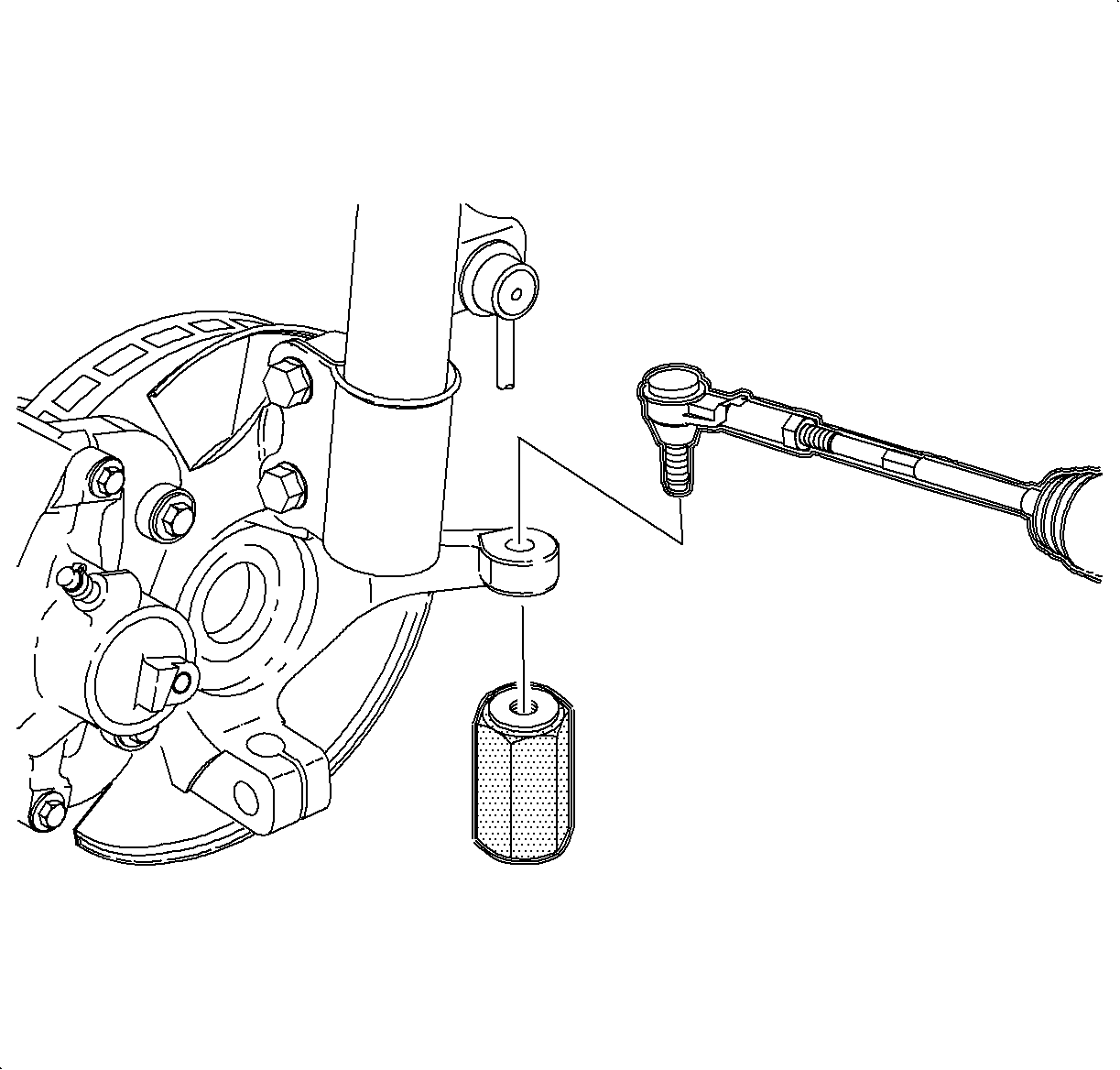

Tighten
Tighten the nuts to 25 N·m (48 lb ft) plus 90 degrees.

Tighten
Tighten the bolt to 34 N·m (25 lb ft).

Tighten
Tighten the nut to 4 N·m (27 lb in).
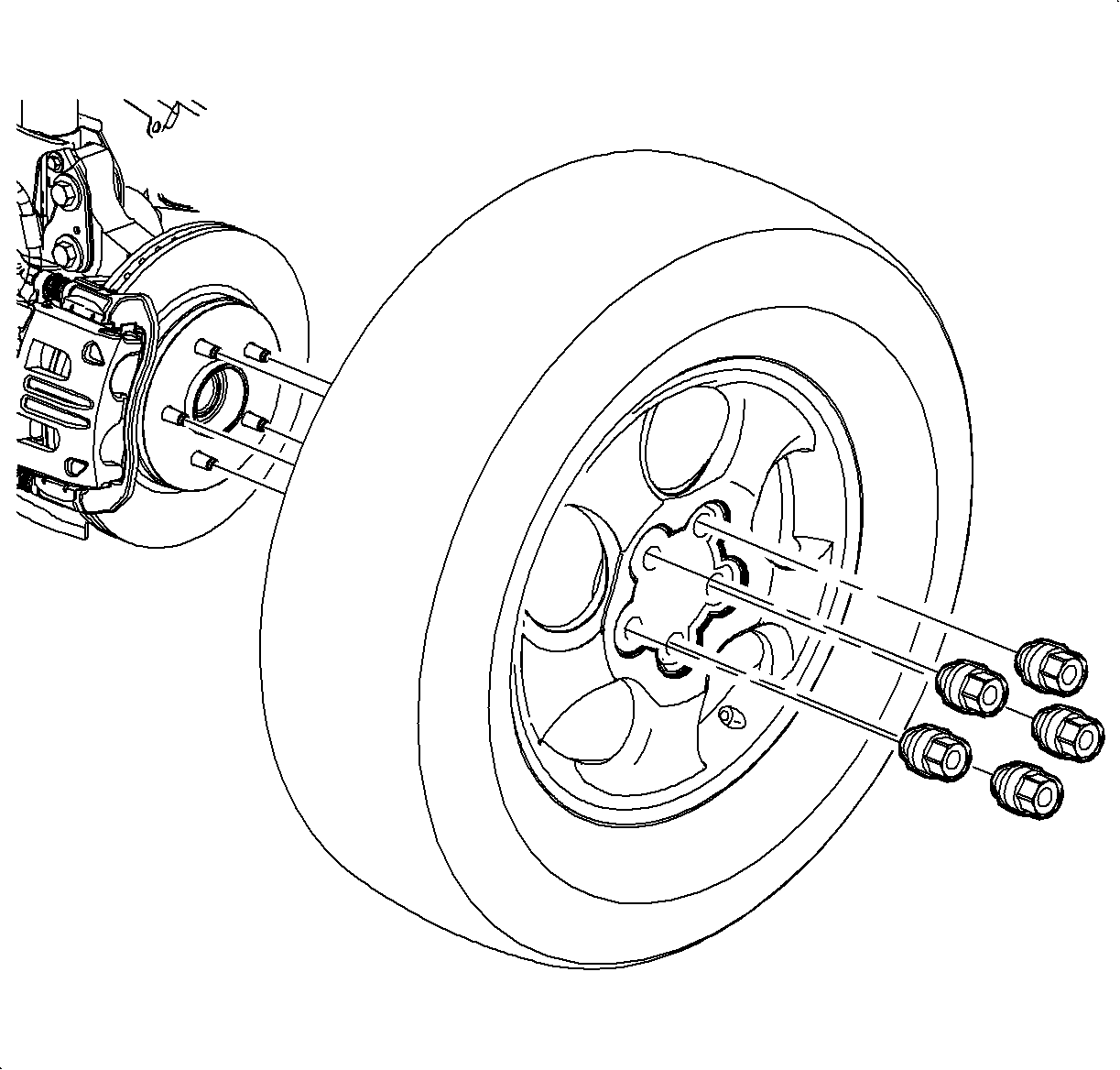



Tighten
Tighten the bolt to 9 N·m (80 lb in).


Tighten
Tighten the nut to 9 N·m (80 lb in).

Tighten
Tighten the nut to 50 N·m (37 lb ft).

Tighten
Tighten the bolts to 50 N·m (37 lb ft).

Tighten
Tighten the bolt to 25 N·m (18 lb ft).









Special Tools
| • | J 38185 |
| • | J 43828 |
| • | J 44015 |
| • | J 44015 |
| • | SA91100C |
Removal Procedure
- Disconnect the negative battery cable. Refer to Battery Negative Cable Disconnection and Connection
- For the LAT engine, disconnect the hybrid battery. Refer to Hybrid Battery Service Disconnect/Connect
- Remove the hood. Refer to Hood Replacement
- Recover the refrigerant. Refer to Refrigerant Recovery and Recharging
- Relieve the fuel system pressure. Refer to Fuel Pressure Relief
- Remove the air cleaner outlet duct. Refer to Air Cleaner Outlet Duct Replacement
- Remove the air cleaner assembly. Refer to Air Cleaner Assembly Replacement
- Disconnect the fuel feed pipe (1) quick connect fitting at the fuel rail. Refer to Metal Collar Quick Connect Fitting Service
- Disconnect the evaporative emission (EVAP) line (3) quick connect fitting from the EVAP purge solenoid. Refer to Plastic Collar Quick Connect Fitting Service
- Remove the fuel feed pipe clip (2) from the fuel line bracket.
- Remove the transaxle shift cable clip (1) from the fuel line bracket.
- Remove the bolts from the engine control module and position aside. Refer to Engine Control Module Replacement
- For the LE5, remove the battery box. Refer to Battery Box Replacement
- For the LAT, remove the battery tray. Refer to Battery Tray Replacement
- On the LAT engine, remove the generator starter. Refer to Generator with Starter Replacement
- Remove the exhaust manifold heat shield. Refer to Exhaust Manifold Heat Shield Replacement
- Remove the oxygen sensors. Refer to Heated Oxygen Sensor 1 Replacement and Heated Oxygen Sensor 2 Replacement
- Remove the throttle body. Refer to Throttle Body Assembly Replacement.
- Remove the engine oil level indicator.
- Raise and support the vehicle. Refer to Lifting and Jacking the Vehicle.
- Remove the front wheels and tires. Refer to Tire and Wheel Removal and Installation.
- Drain the cooling system. Refer to Cooling System Draining and Filling.
- Drain the engine oil. Refer to Engine Oil and Oil Filter Replacement.
- Lower the vehicle.
- On all engines, reposition the vacuum brake booster hose clamp (1) at the intake manifold.
- Remove the vacuum brake booster hose (2) from the intake manifold. Reposition the brake booster hose out of the way.
- Remove the coolant recovery inlet hose clamp (2) at the cylinder head.
- Remove the coolant recovery inlet pipe clip from the fuel rail.
- Remove the coolant recovery inlet hose (1) from the cylinder head. Reposition the hose/pipe out of the way.
- Reposition the radiator inlet hose clamp using the J 38185
- Remove the radiator inlet hose from the cylinder head.
- Remove the radiator outlet hose. Refer to Radiator Outlet Hose Replacement
- On LAT engine, reposition the generator control module coolant hose clamp (1) at the generator control module.
- Remove the generator control module coolant hose from the generator control module.
- Disconnect the engine wiring harness electrical connector (1) from the transaxle auxiliary pump module.
- Remove the auxiliary heater water pump hose clip (1) from the heater outlet hose.
- On all engines, reposition the heater inlet hose clamp at the thermostat housing.
- Remove the heater inlet hose (3) from the thermostat housing.
- Reposition the coolant recovery reservoir/heater inlet hose (2) clamp at the thermostat housing.
- Remove the coolant recovery reservoir/heater inlet hose (2) from the thermostat housing.
- Raise and support the vehicle. Refer to Lifting and Jacking the Vehicle
- On LAT engine, disconnect the engine wiring harness electrical connector (1) from the generator control module coolant pump.
- On all engines, disconnect the engine wiring harness electrical connector (2) from the air conditioning (A/C) compressor.
- On LAT engine, remove the generator control module coolant pump bolt and pump.
- On all engines, unbolt the A/C compressor and reposition out of the way.
- Remove the engine wiring harness ground lead nut (1) from the transaxle stud.
- Remove the negative battery cable lead (2) from the transaxle stud. Reposition the negative battery cable out of the way.
- Remove the positive battery cable to starter motor nut (4).
- Remove the positive battery cable lead (1) from the starter motor.
- Remove the positive battery cable from in between the starter and the engine. Reposition the positive battery cable out of the way.
- On LAT engine, disconnect the engine wiring harness electrical connector (2) from the auxiliary heater water pump.
- Remove the auxiliary heater water pump bolt and pump.
- On all engines, lower the vehicle.
- Remove the transaxle shift cable from the range select lever.
- Release the shift control cable retaining clip and remove the cable from the shift control cable bracket.
- Using long tie straps, secure the radiator/condenser/fan assembly to the radiator support.
- Raise the vehicle.
- Remove the front wheelhouse liners. Refer to Front Wheelhouse Liner Replacement
- Install a piece of hardwood 1 x 2 x 4 between the transaxle and the engine cradle.
- Install a piece of hardwood 1 x 2 x 4 between the oil pan and the engine frame.
- Drain the transaxle fluid.
- Remove the transaxle oil cooler line to transaxle nut (1).
- Remove the transaxle oil cooler lines from the transaxle.
- Remove the catalytic converter. Refer to Catalytic Converter Replacement
- Remove the intermediate to steering gear pinch bolt and disconnect the intermediate shaft from the steering gear. Discard the pinch bolt.
- Remove and discard both outer tie rod to steering knuckle nuts.
- Using the SA91100C
- Remove the stabilizer link to stabilizer shaft nuts and disconnect the stabilizer links from the stabilizer shaft.
- Remove and discard both of the lower control arm ball stud cotter pins.
- Loosen the ball stud nuts until the nuts are level with the top of the ball stud.
- Using the J 43828
- Remove the ball stud nuts.
- Remove the wheel drive shafts. Refer to Front Wheel Drive Shaft Replacement
- Lower the vehicle.
- Remove the engine mount to engine mount bracket bolts (2).
- Remove the transaxle mount to transaxle adapter bolts.
- Raise the vehicle.
- Position a engine support table under the powertrain assembly.
- With the table positioned, fully raise the table to contact with the powertrain assembly.
- Remove the frame to body bolts. Discard the bolts.
- Lower the engine table and raise the body on the hoist until the engine/transaxle and cradle are free from the vehicle.
- Disconnect the engine wiring harness electrical connector (1) from the throttle actuator.
- Disconnect the engine wiring harness electrical connector (8) from the fuel injector wiring harness electrical connector (7).
- Remove the engine wiring harness clip (3) from the oil level indicator tube bracket.
- Disconnect the engine wiring harness electrical connectors (1) from the ignition coils.
- Disconnect the engine wiring harness electrical connectors (2, 3) from the camshaft actuators.
- Disconnect the engine wiring harness electrical connector (1) from the crankshaft position (CKP) sensor.
- Disconnect the engine wiring harness electrical connector (2) from the oil pressure sensor.
- Disconnect the engine wiring harness electrical connector (3) from the knock sensor.
- Disconnect the engine wiring harness electrical connector (1) from the intake camshaft position (CMP) sensor.
- Disconnect the engine wiring harness electrical connector (2) from the EVAP emission canister purge solenoid valve.
- Disconnect the engine wiring harness electrical connector (1) from the exhaust CMP sensor.
- Disconnect the engine wiring harness electrical connector (1) from the engine coolant temperature (ECT) sensor.
- Disconnect the engine wiring harness electrical connector (3) from the heated oxygen sensor (HO2S) electrical connector.
- Remove the engine wiring harness clip (5) from the stud.
- Remove the engine wiring harness ground bolt (1) and reposition the ground terminal from the engine.
- Gather all branches of the engine wiring harness and reposition the harness out of the way.
- Remove the starter motor bolts and starter.
- Remove the torque converter to flexplate bolts (1).
- Install a suitable lifting devise to the engine.
- Remove the transaxle bolts from the engine.
- Separate the engine from the transaxle.
- Install the engine to a suitable engine stand.

















Note: The radiator/condenser/fan assembly will stay in the vehicle during engine removal.
Note: A piece of hardwood should be used between the transaxle and the engine cradle. This wood will support the engine when the left side engine mounts bolts are removed.
Note: A piece of hardwood should be used between the oil pan and the engine cradle. This wood will support the engine when the right side engine mounts are removed.


Note: Secure the steering wheel in the straight forward position before separating the intermediate shaft from the steering gear, or damage to the SIR coil will occur.

Note: Hold the ball stud to prevent turning during removal of the nut.






Note: During the powertrain removal support the vehicle body by placing a jack at the rear of the vehicle.
Note: Blocks of wood can be used between the front of the frame and the oil pan to table in order to level the powertrain during the removal.
Note: When lowering the engine/transaxle assembly, verify all brake lines, shifter cables and other components are free during removal.










Installation Procedure
- Install a suitable lifting devise to the engine.
- Using the lifting devise, position and install the engine to the transaxle.
- Install the transaxle bolts to the engine and tighten the bolts to 75 N·m (55 lb ft).
- Install the torque converter to flexplate bolts (1) and tighten to 60 N·m (44 lb ft).
- Remove the engine lifting devise.
- Install the starter motor and bolts and tighten the bolts to 53 N·m (39 lb ft).
- Gather all branches of the engine wiring harness and position the harness to the engine.
- Position the engine wiring harness ground terminal to the engine and install the engine wiring harness ground bolt (1).
- Connect the engine wiring harness electrical connector (1) to the ECT sensor.
- Connect the engine wiring harness electrical connector (3) to the HO2S electrical connector.
- Install the engine wiring harness clip (5) to the stud.
- Connect the engine wiring harness electrical connector (1) to the exhaust CMP sensor.
- Connect the engine wiring harness electrical connector (1) to the intake CMP sensor.
- Connect the engine wiring harness electrical connector (2) to the EVAP emission canister purge solenoid valve.
- Connect the engine wiring harness electrical connector (1) to the CKP sensor.
- Connect the engine wiring harness electrical connector (2) to the oil pressure sensor.
- Connect the engine wiring harness electrical connector (3) to the knock sensor.
- Connect the engine wiring harness electrical connectors (1) to the ignition coils.
- Connect the engine wiring harness electrical connectors (2, 3) to the camshaft actuators.
- Connect the engine wiring harness electrical connector (1) to the throttle actuator.
- Connect the engine wiring harness electrical connector (8) to the fuel injector wiring harness electrical connector (7).
- Install the engine wiring harness clip (3) to the oil level indicator tube bracket.
- Position the powertrain and support table under the vehicle.
- Raise the powertrain into position under the vehicle.
- With the table positioned, if required, lower the vehicle over the powertrain.
- Align the lower radiator pins with the frame. Ensure all hoses and electrical harnesses are correctly routed and free from the loading path of the powertrain.
- Install the NEW frame to body bolts and tighten to 155 N·m (114 lb ft).
- Lower the vehicle.
- Install the transaxle mount to transaxle adapter bolts and tighten to 55 N·m (41 lb ft).
- Install the engine mount to engine mount bracket bolts (2):
- Tighten the engine mount to bracket bolts in the following sequence.
- Raise and support the vehicle.
- Install the wheel drive shafts. Refer to Front Wheel Drive Shaft Replacement
- Install the control arm ball studs into the steering knuckles.
- Install the ball stud nuts and tighten to 40 N·m (30 lb ft)
- Continue to tighten the nuts only enough to align the castle nut slots with the ball stud, install NEW cotter pins.
- Connect the stabilizer links to the stabilizer shaft and install the stabilizer link to stabilizer shaft nuts.
- Connect the outer tie rods to the steering knuckles.
- Use the J 44015
- Remove the J 44015
- Install NEW outer tie rod to steering knuckle nuts and tighten to 25 N·m (48 lb ft) plus 90 degrees.
- Position the intermediate shaft to the steering gear and install a NEW pinch bolt.
- Install the catalytic converter. Refer to Catalytic Converter Replacement
- Install the transaxle oil cooler lines to the transaxle.
- Install the transaxle oil cooler line to transaxle nut (1) and tighten to 4 N·m (27 lb in).
- Remove the wood from between the oil pan and the engine cradle.
- Remove the wood from between the transaxle and the engine cradle.
- Install the front wheelhouse liners. Refer to Front Wheelhouse Liner Replacement
- Install the front wheels and tires. Refer to Tire and Wheel Removal and Installation
- Lower the vehicle.
- Unsecure and position the radiator/condenser/fan assembly.
- Install the shift control cable to the shift control cable bracket and engage the shift control cable retaining clip.
- Install the transaxle shift cable to the range select lever.
- Raise and support the vehicle.
- Install the oxygen sensors. Refer to Heated Oxygen Sensor 1 Replacement and Heated Oxygen Sensor 2 Replacement
- Instal the exhaust manifold heat shield. Refer to Exhaust Manifold Heat Shield Replacement
- On LAT engine, install the auxiliary heater water pump and bolt and tighten the bolt to 9 N·m (80 lb in).
- Connect the engine wiring harness electrical connector (2) to the auxiliary heater water pump.
- Install the engine control module. Refer to Engine Control Module Replacement
- On all engines, position and install the positive battery cable between the starter and the engine.
- Install the positive battery cable lead (1) to the starter motor.
- Install the positive battery cable to starter motor nut (4) and tighten the nut to 9 N·m (80 lb in).
- Position the negative battery cable and install the negative battery cable lead (2) to the transaxle stud.
- Install the engine wiring harness ground lead nut (1) to the transaxle stud and tighten the nut to 50 N·m (37 lb ft).
- Position the A/C compressor and install the bolts and tighten to 50 N·m (37 lb ft).
- On LAT engine, install the generator control module coolant pump and bolt and tighten the bolt to 25 N·m (18 lb ft).
- Connect the engine wiring harness electrical connector (1) to the generator control module coolant pump.
- On all engines, connect the engine wiring harness electrical connector (2) to the A/C compressor.
- Lower the vehicle.
- Install the coolant recovery reservoir/heater inlet hose (2) to the thermostat housing.
- Position the coolant recovery reservoir/heater inlet hose (2) clamp at the thermostat housing.
- Install the heater inlet hose (3) to the thermostat housing.
- Position the heater inlet hose clamp at the thermostat housing.
- Install the auxiliary heater water pump hose clip (1) to the heater outlet hose.
- On LAT engine, connect the engine wiring harness electrical connector (1) to the transaxle auxiliary pump module.
- Install the generator control module coolant hose to the generator control module.
- Position the generator control module coolant hose clamp (1) at the generator control module.
- On all engines, reposition the radiator inlet hose clamp using the J 38185
- Remove the radiator inlet hose from the cylinder head.
- Remove the radiator outlet hose. Refer to Radiator Outlet Hose Replacement
- Position and install the coolant recovery inlet hose (1) to the cylinder head.
- Install the coolant recovery inlet pipe clip to the fuel rail.
- Install the coolant recovery inlet hose clamp (2) at the cylinder head.
- Position and install the vacuum brake booster hose (2) to the intake manifold.
- Position the vacuum brake booster hose clamp (1) at the intake manifold.
- Install the generator starter. Refer to Generator with Starter Replacement
- For the LAT, install the battery tray. Refer to Battery Tray Replacement
- For the LE5, install the battery box. Refer to Battery Box Replacement
- Install the transaxle shift cable clip (1) to the fuel line bracket.
- Install the throttle body. Refer to Throttle Body Assembly Replacement
- Install the fuel feed pipe clip (2) to the fuel line bracket.
- Connect the EVAP line (3) quick connect fitting to the EVAP purge solenoid. Refer to Plastic Collar Quick Connect Fitting Service
- Connect the fuel feed pipe (1) quick connect fitting at the fuel rail. Refer to Metal Collar Quick Connect Fitting Service
- Install the air cleaner outlet duct. Refer to Air Cleaner Outlet Duct Replacement
- Install the air cleaner assembly. Refer to Air Cleaner Assembly Replacement
- Fill the cooling system. Refer to Cooling System Draining and Filling
- For the LAT engine, reconnect the hybrid battery. Refer to Hybrid Battery Service Disconnect/Connect
- Fill the transaxle with fluid. Refer to Transmission Fluid Check
- Refill the engine with oil. Refer to Engine Oil and Oil Filter Replacement
- Recharge the A/C system with refrigerant. Refer to Refrigerant Recovery and Recharging
- Perform the CKP system variation learn procedure. Refer to Crankshaft Position System Variation Learn
- Start the engine and allow the engine to run, inspect for leaks. Correct as necessary.
- Install the hood. Refer to Hood Replacement

Caution: Refer to Fastener Caution in the Preface section.



Tighten the bolt to 20 N·m (15 lb ft).









| 31.1. | Middle |
| 31.2. | Rear |
| 31.3. | Front |
Tighten the bolts to 50 N·m (37 lb ft).


Tighten the nuts to 65 N·m (48 lb ft).



Tighten the bolt to 34 N·m (25 lb ft).



















